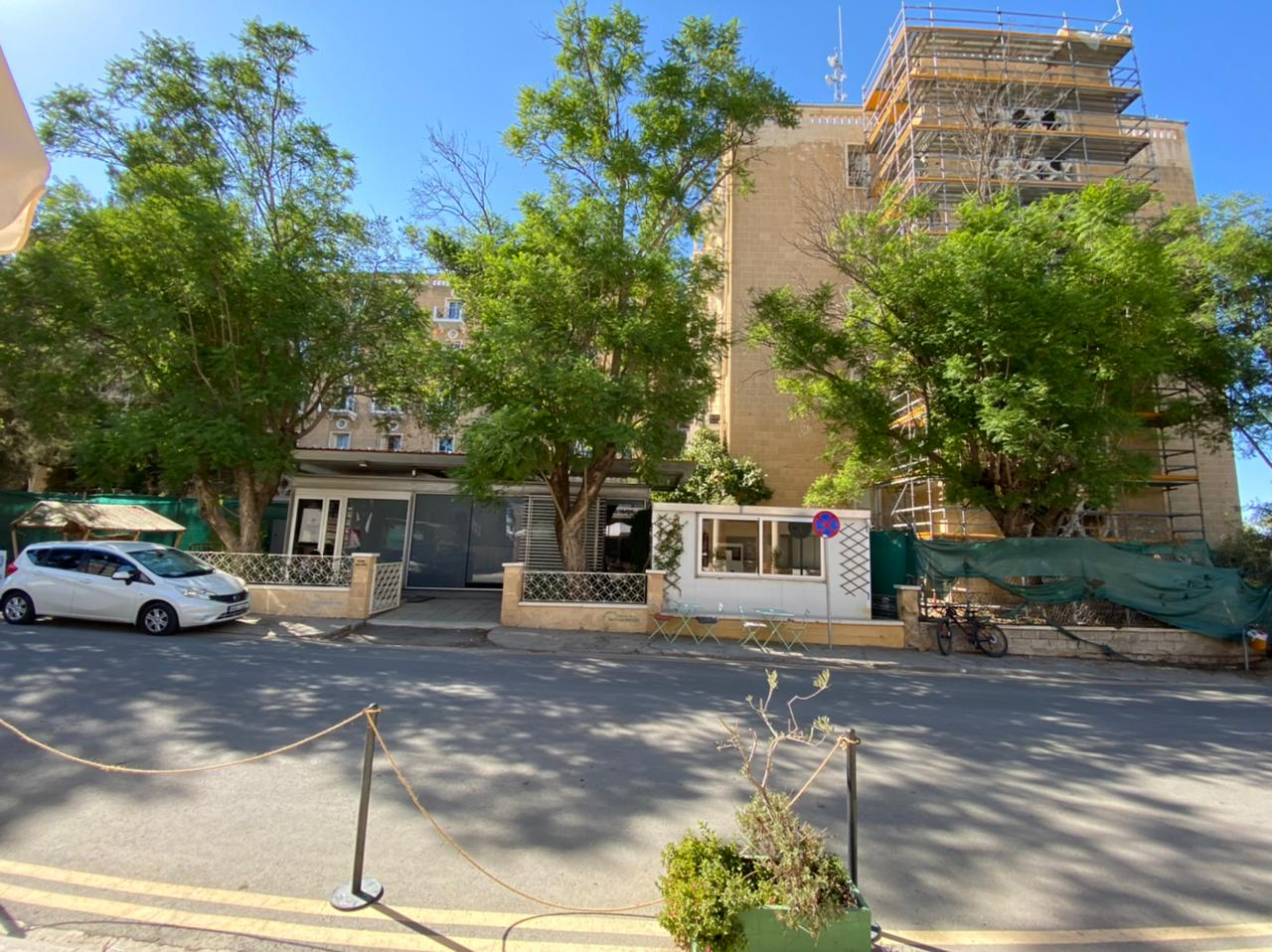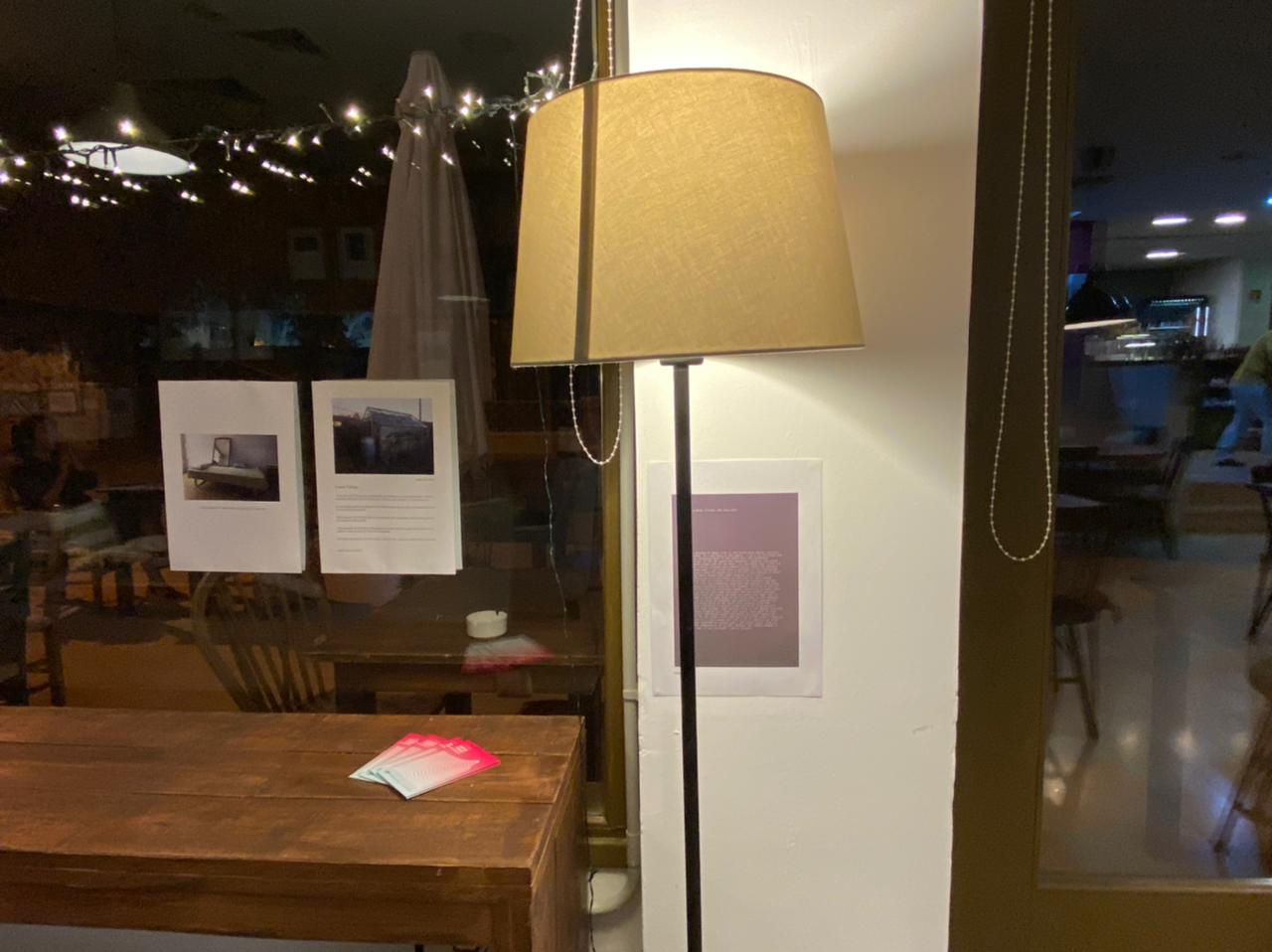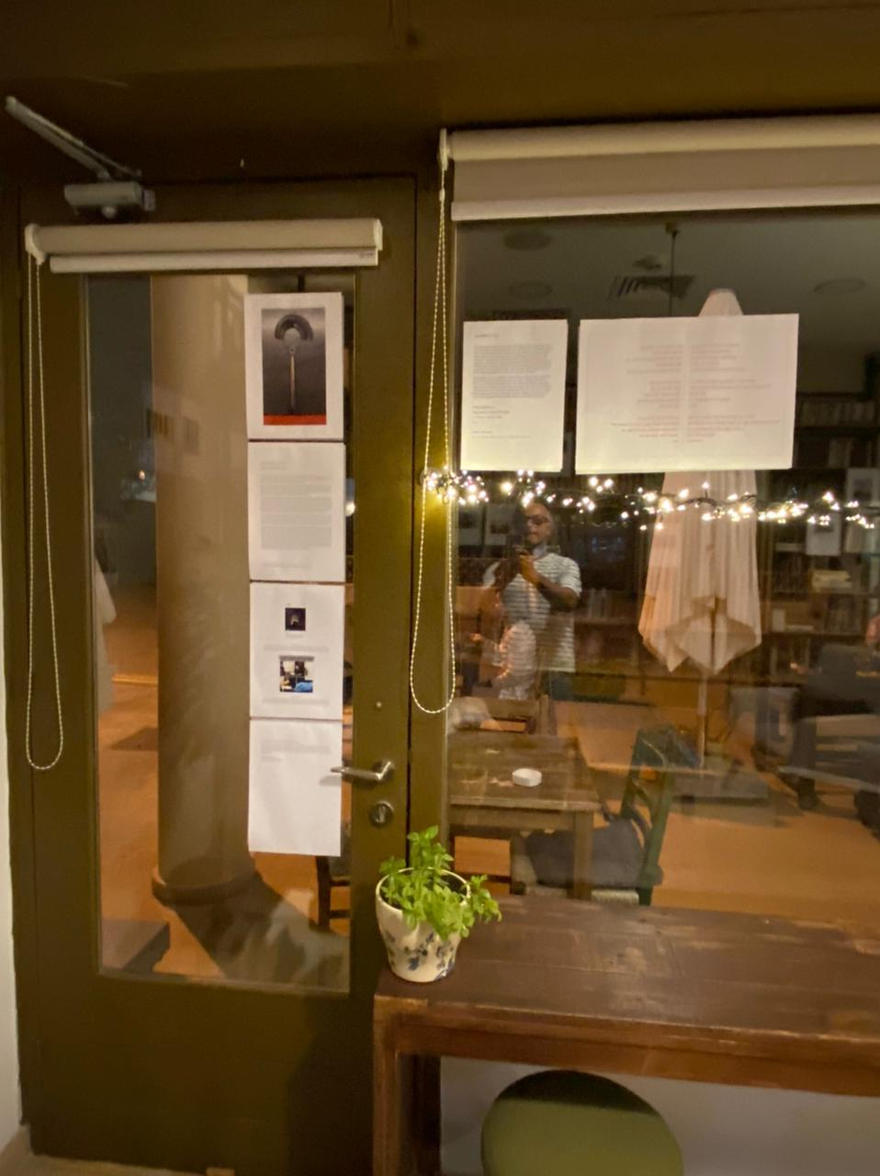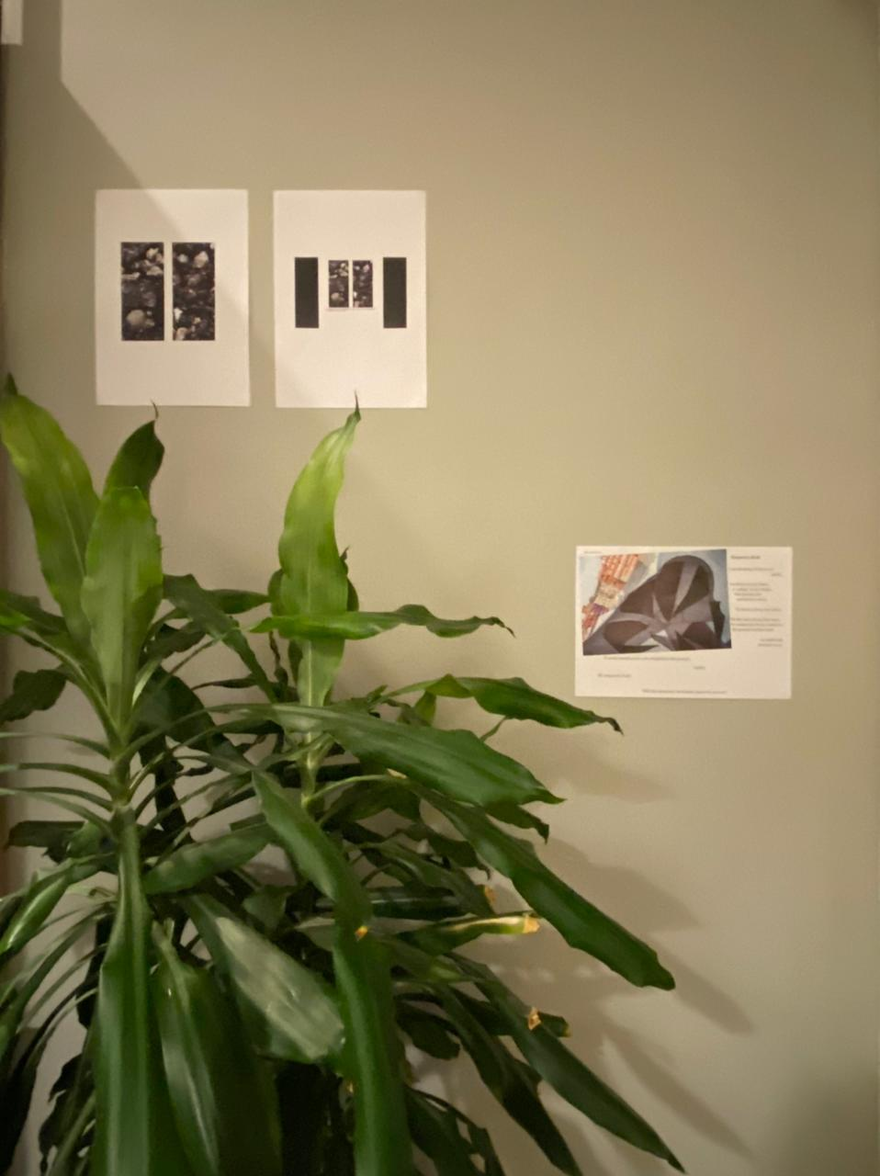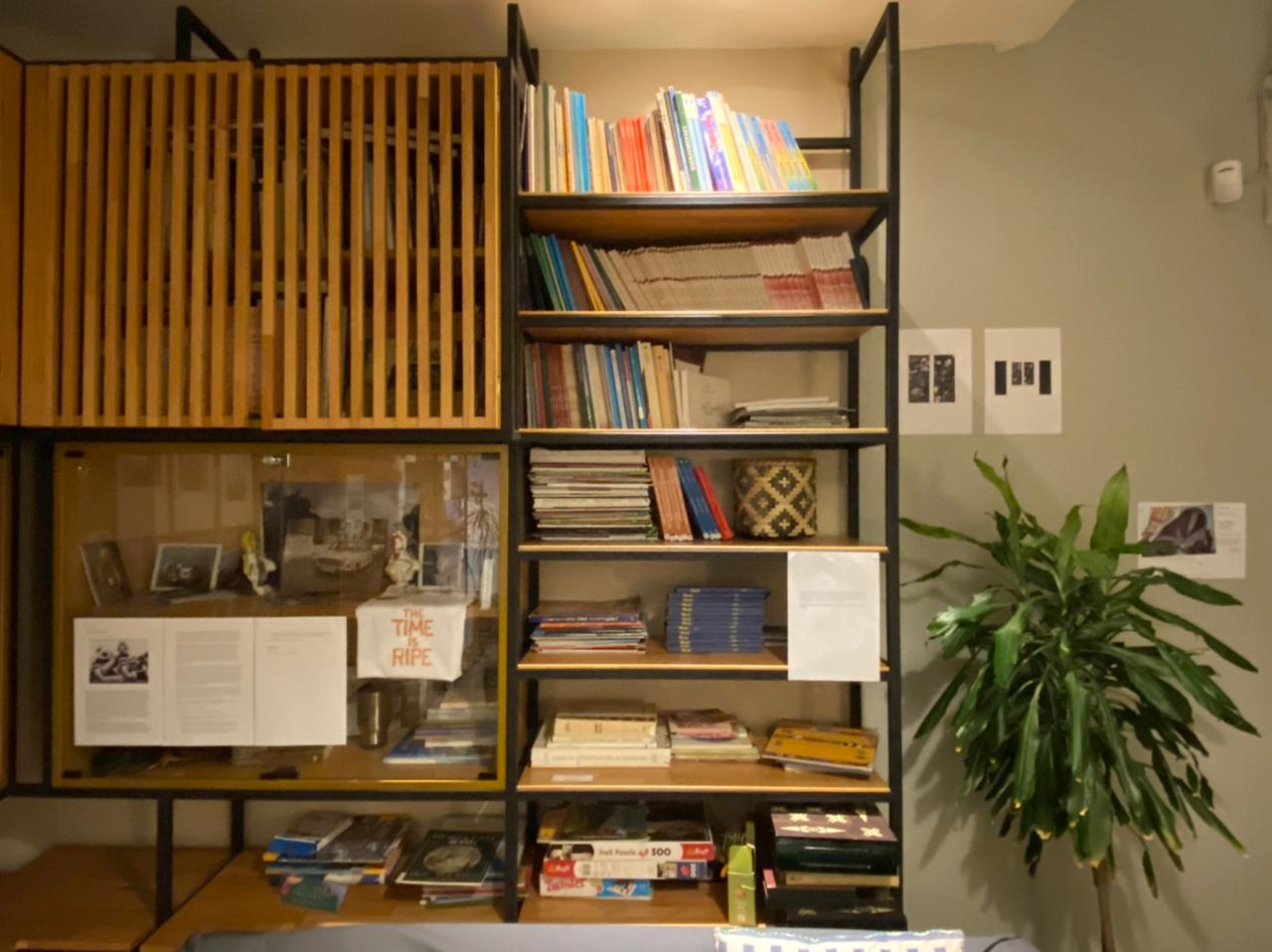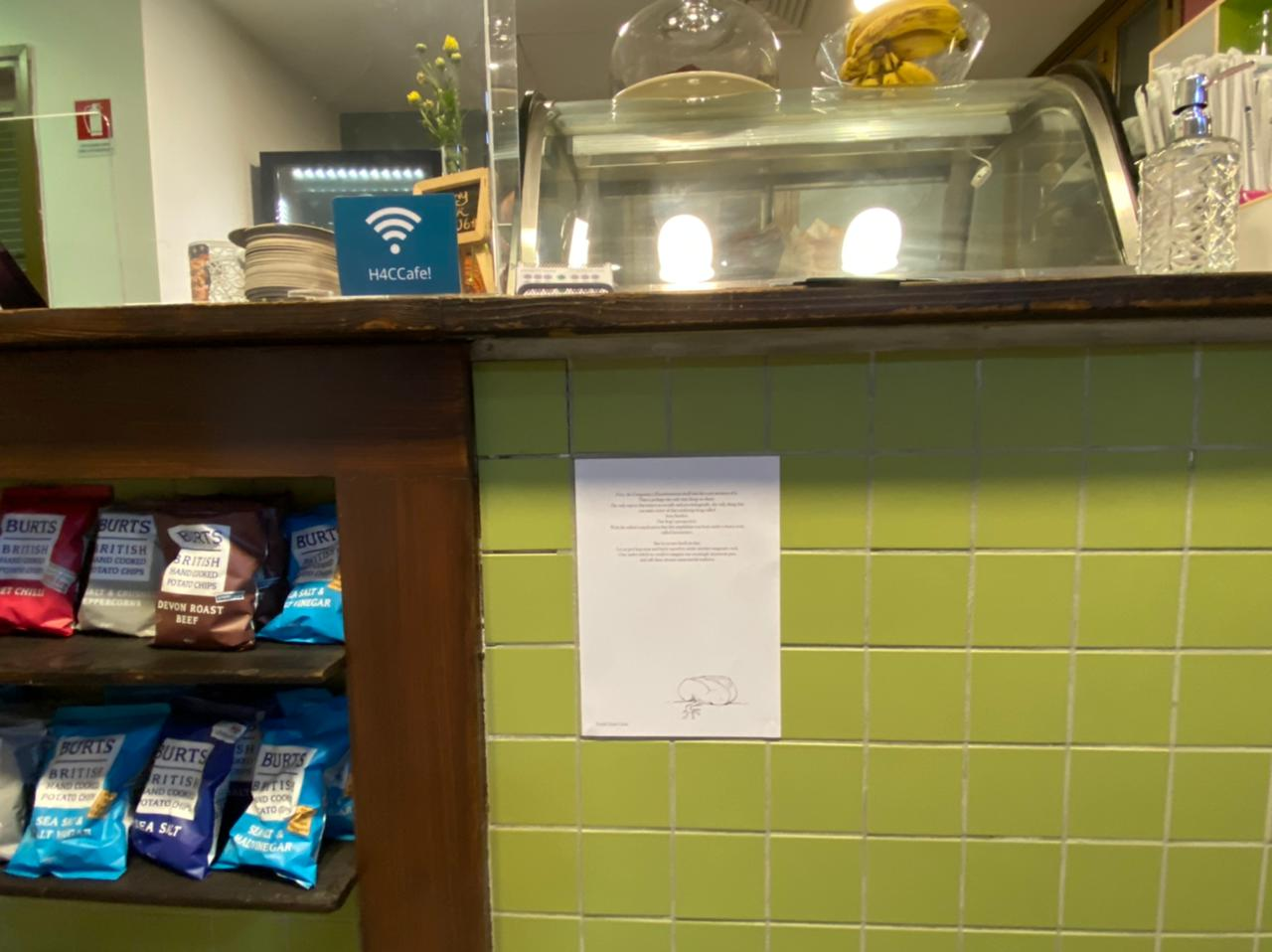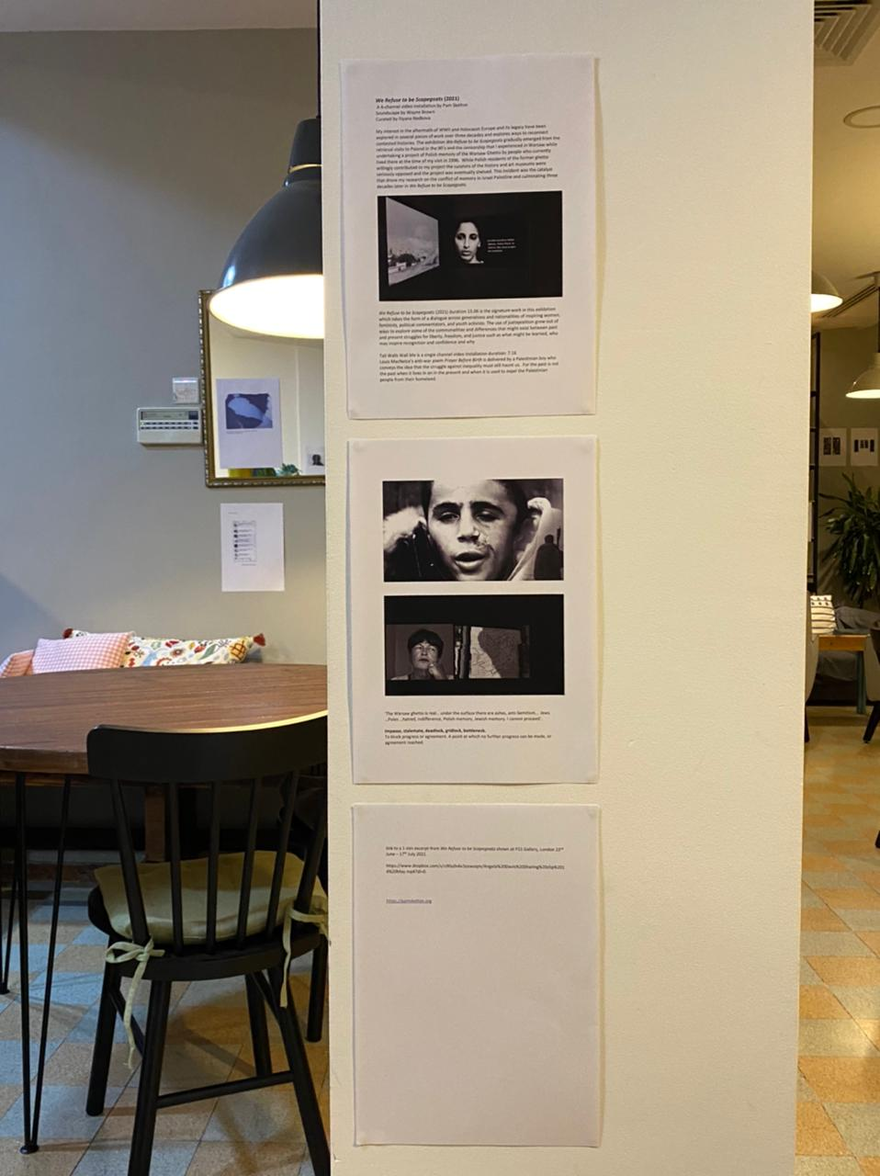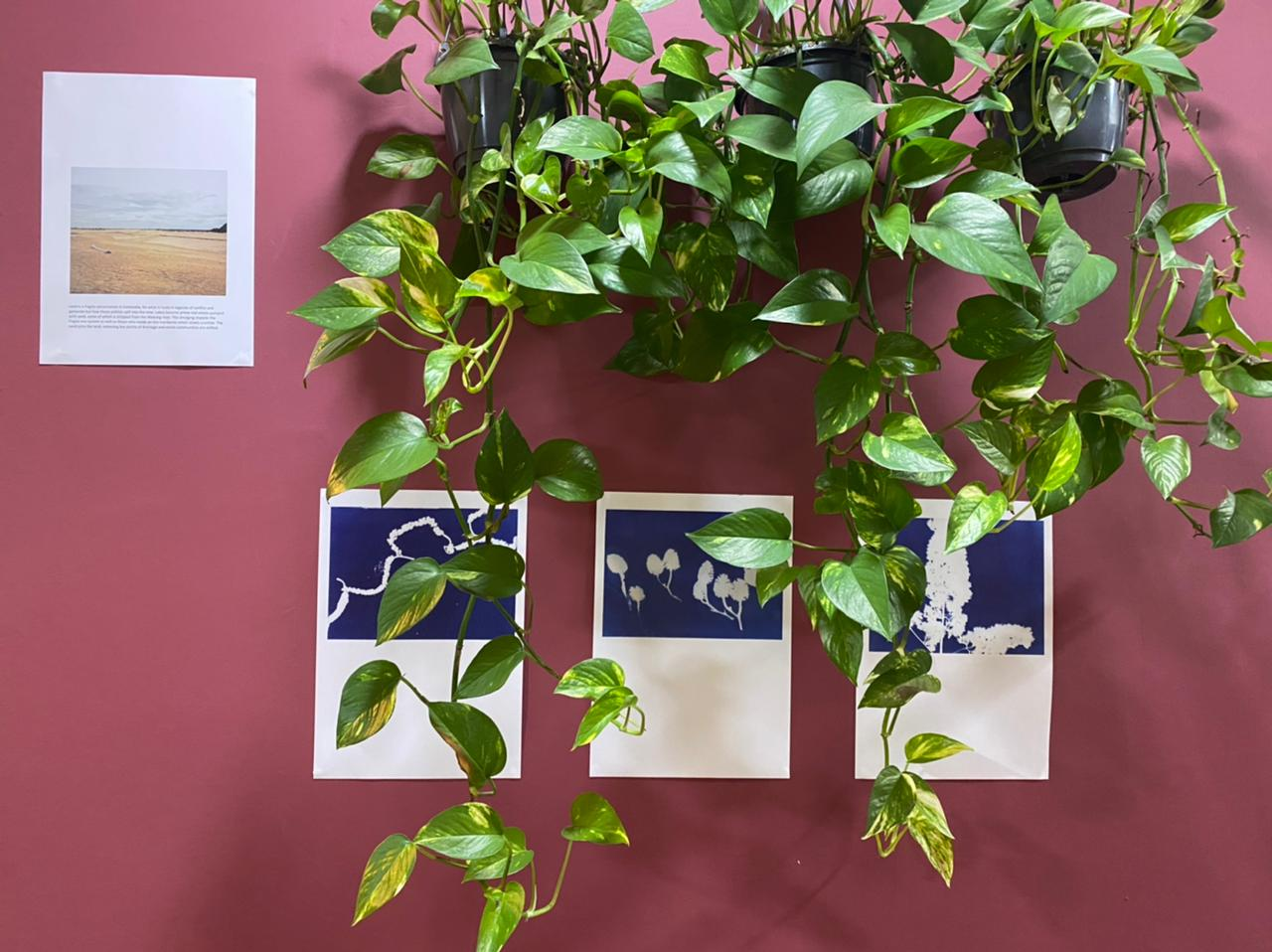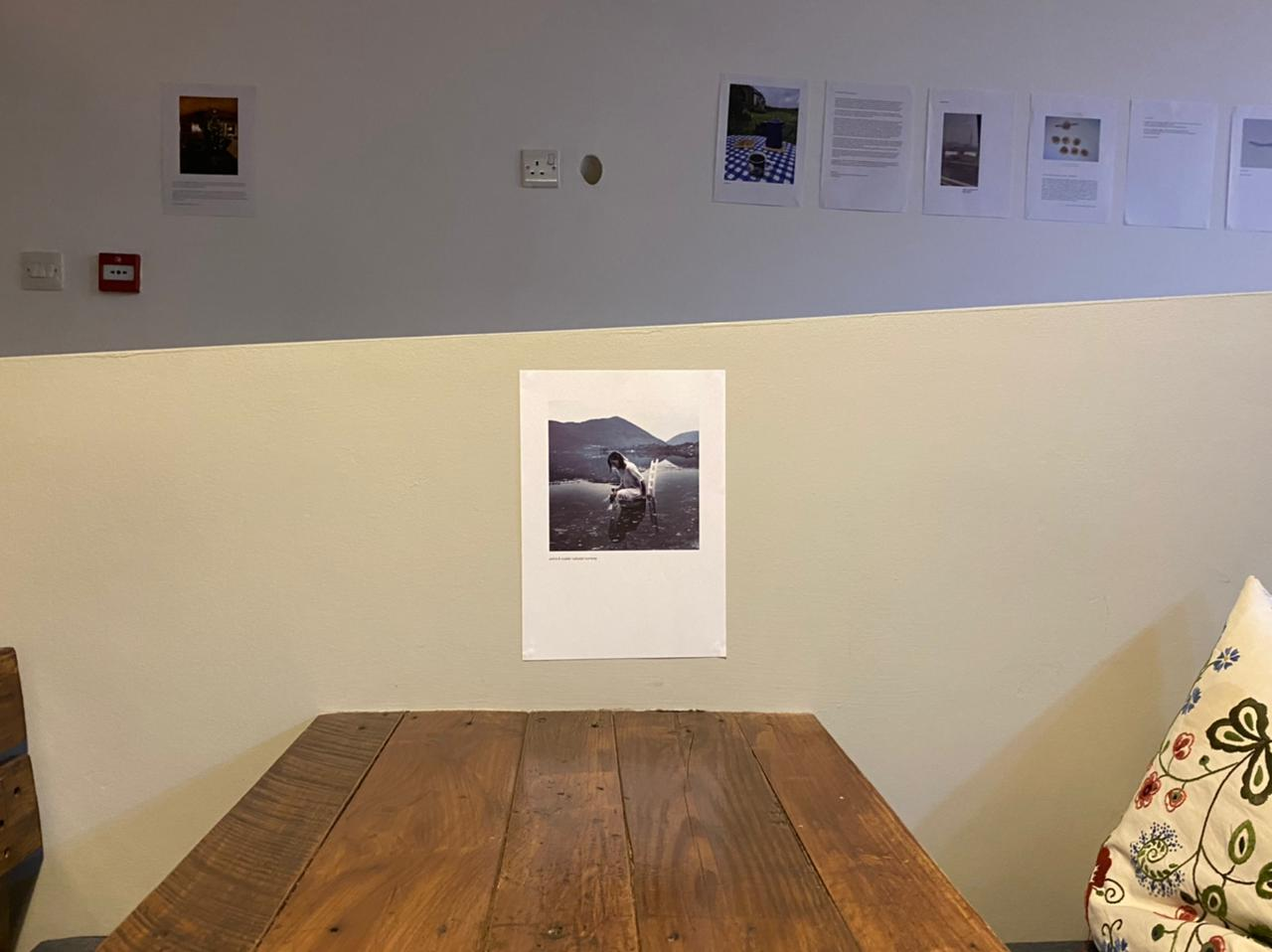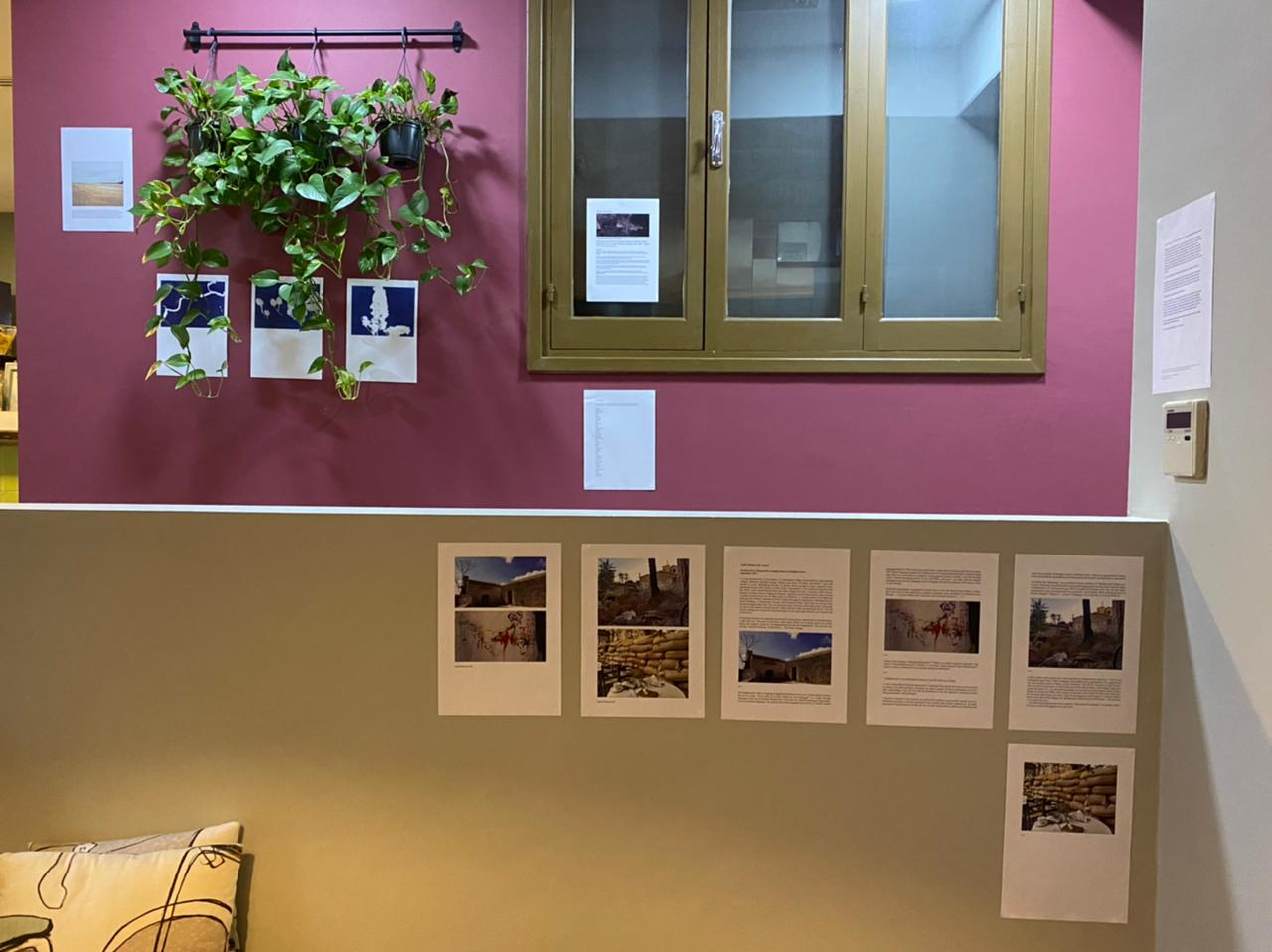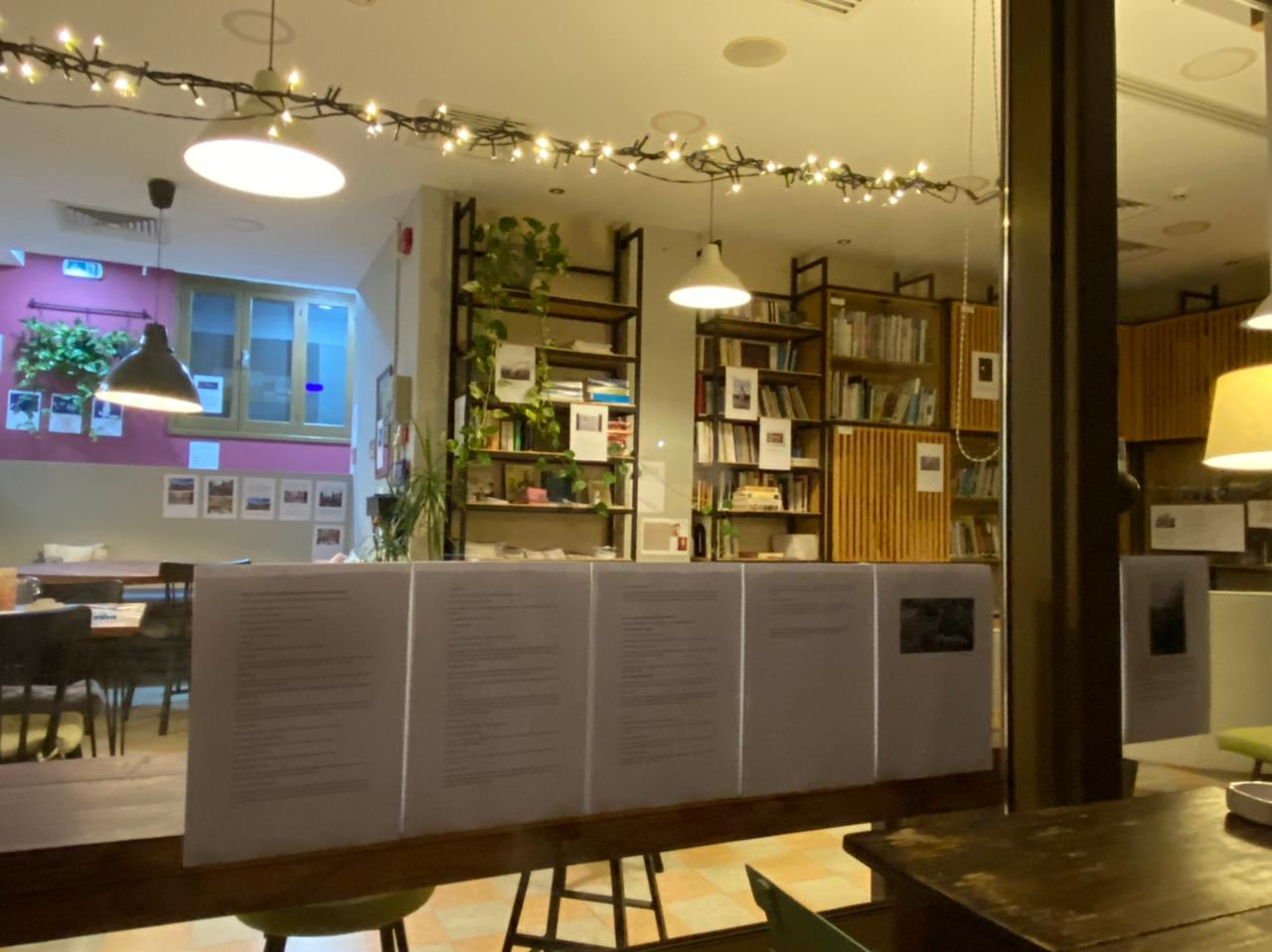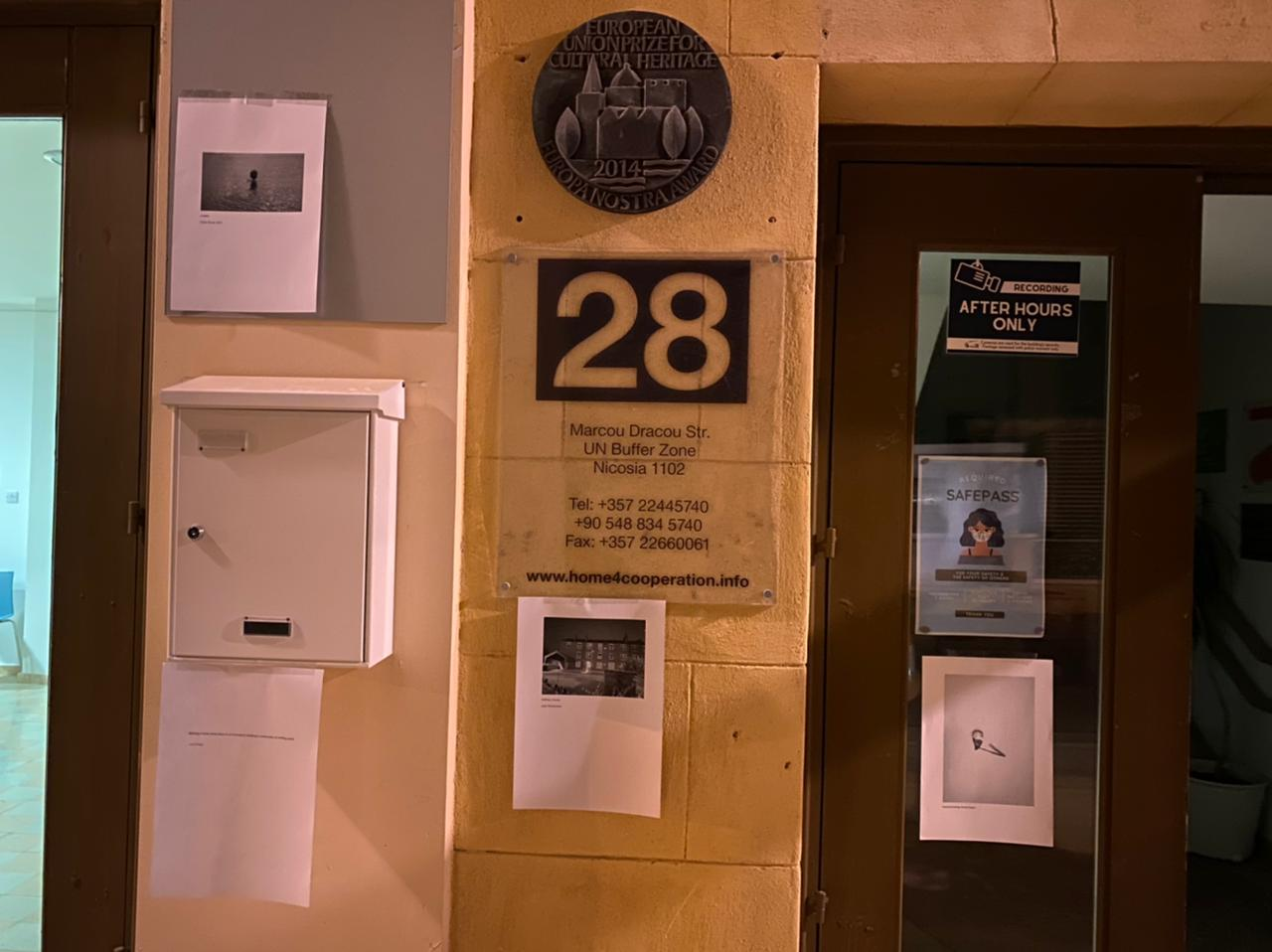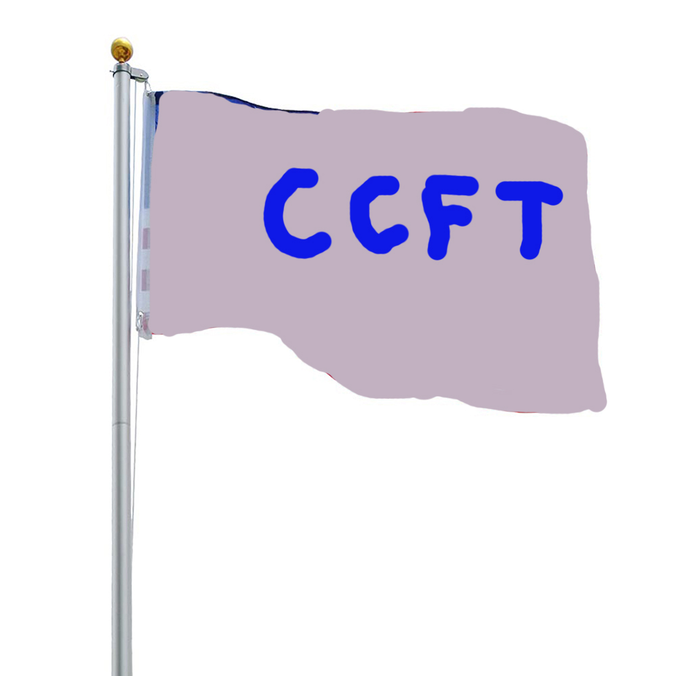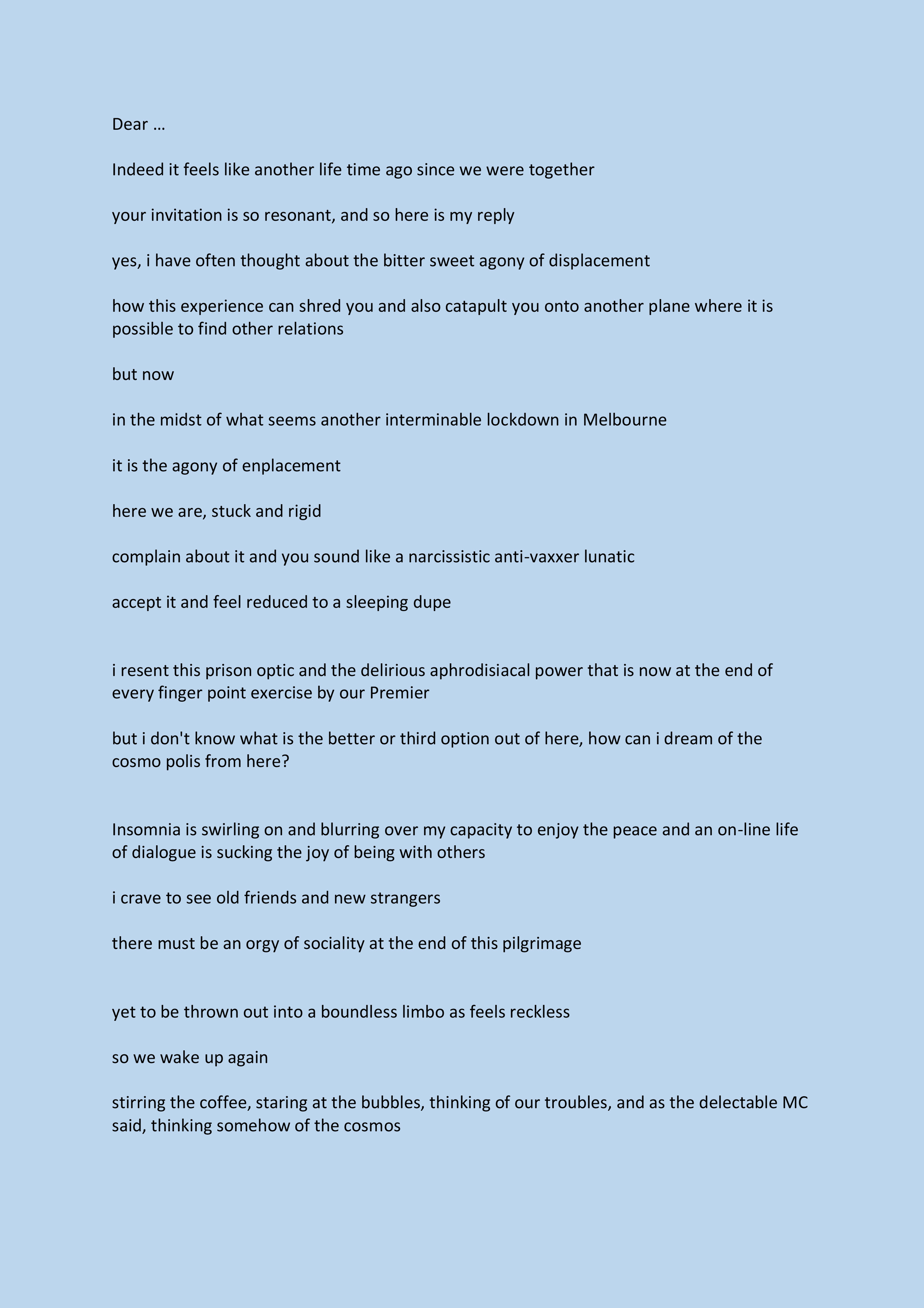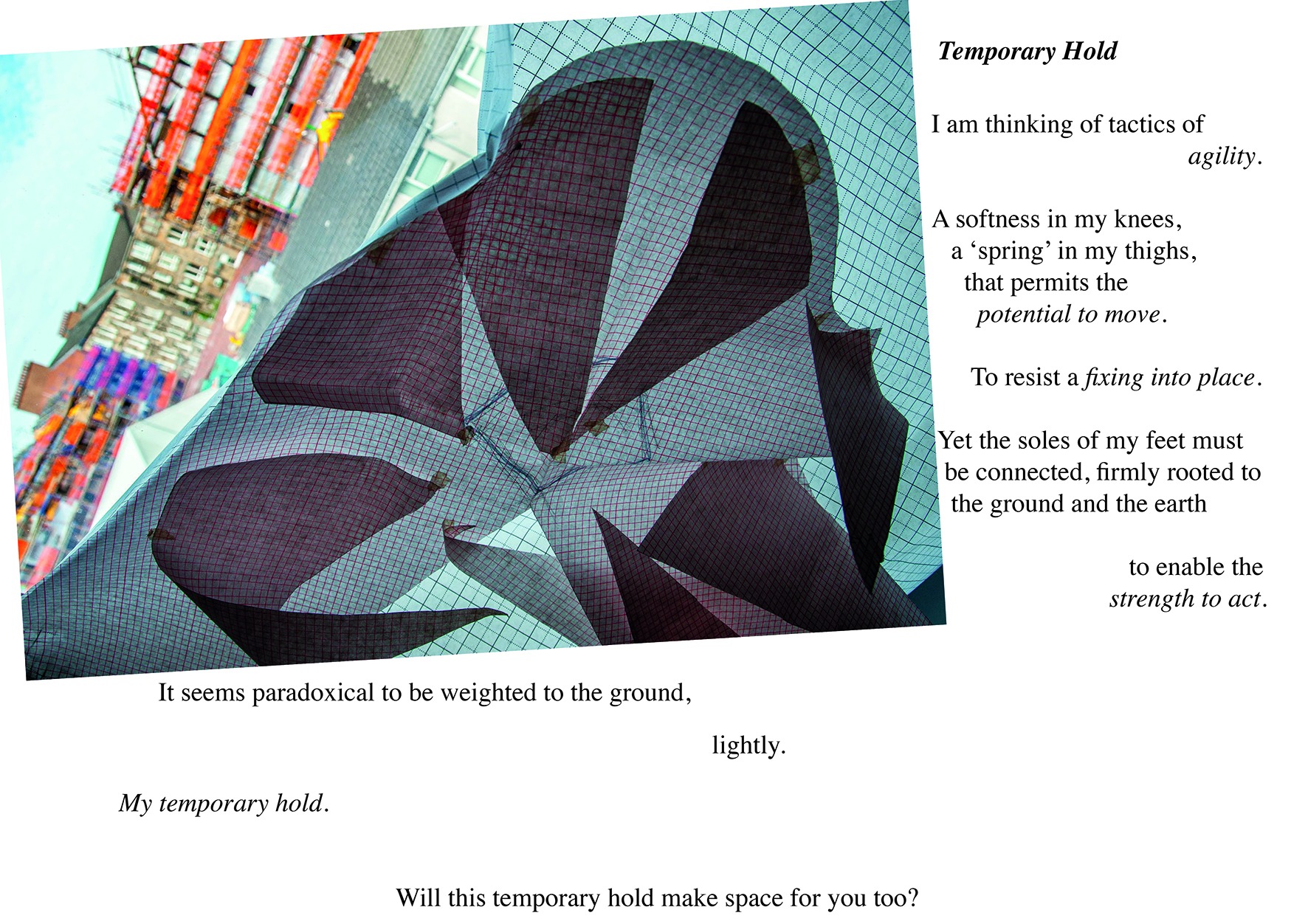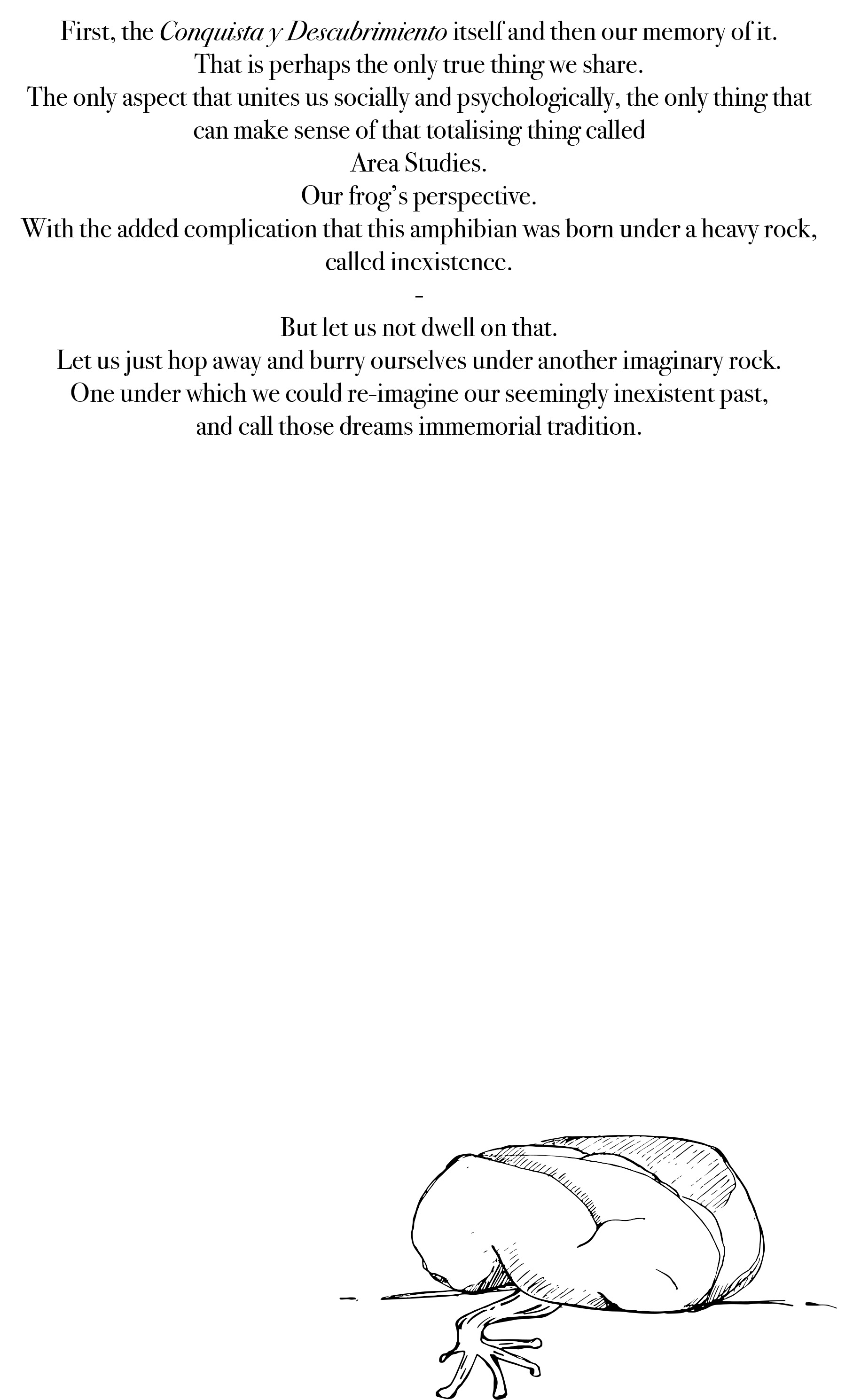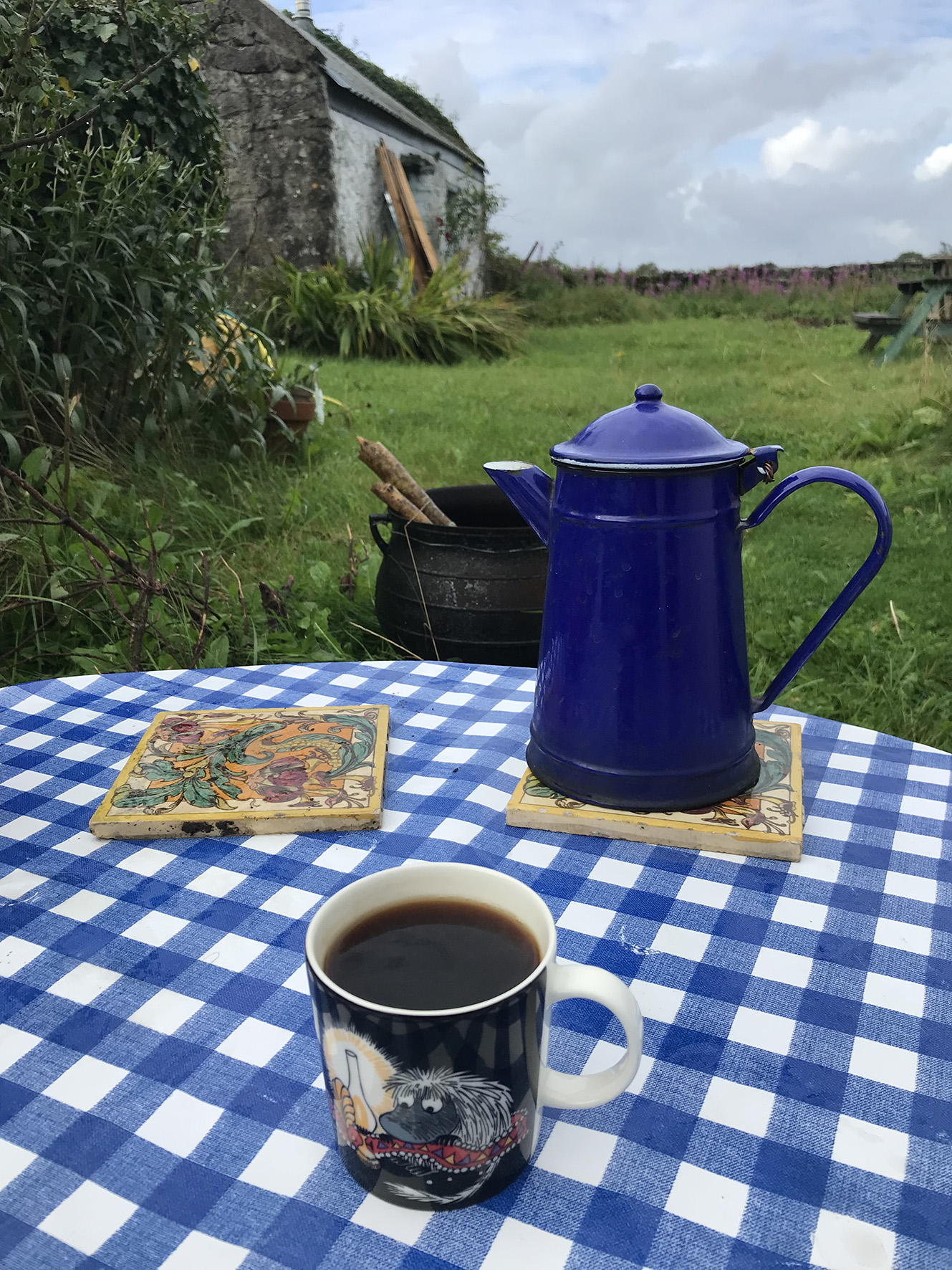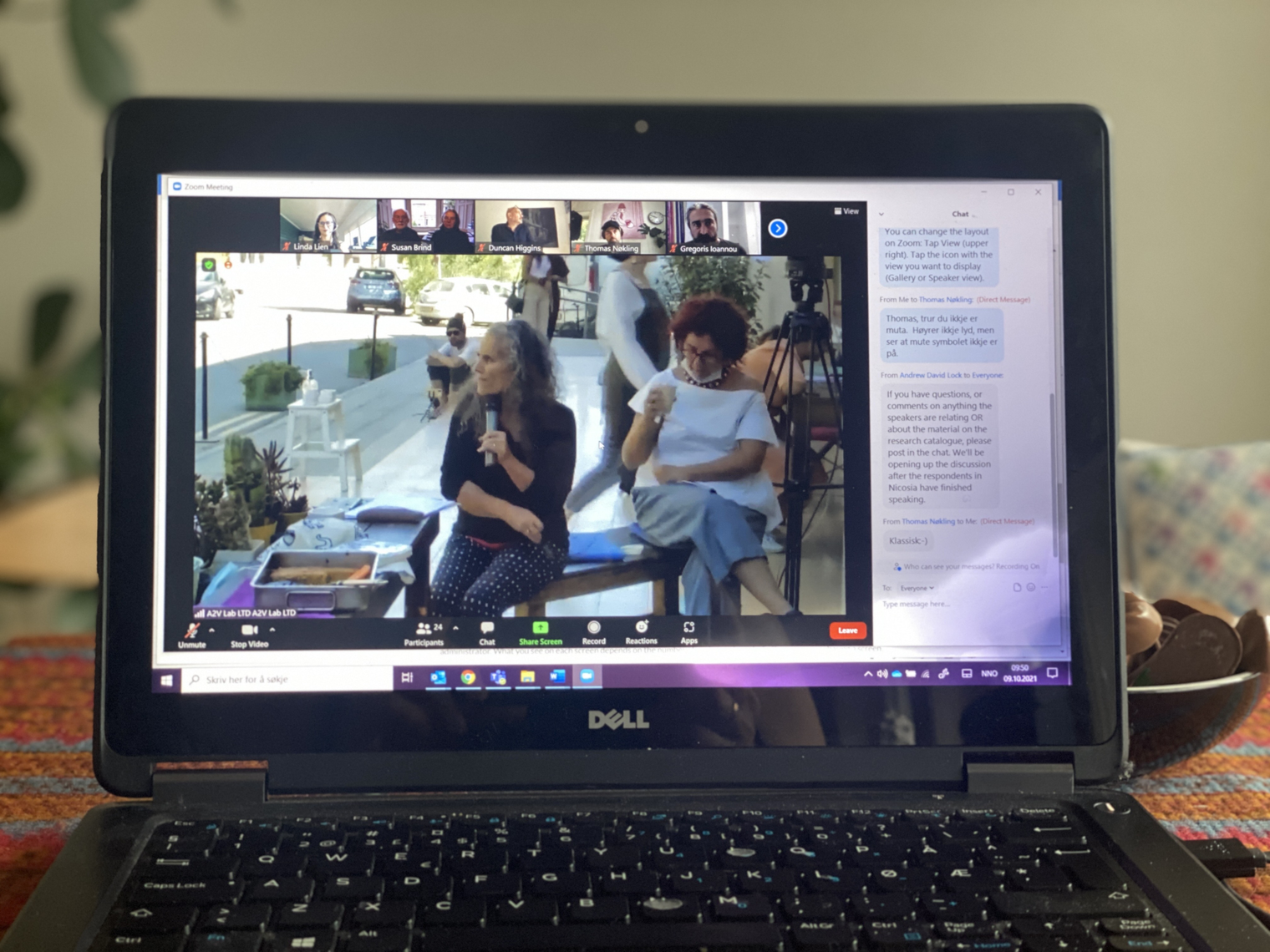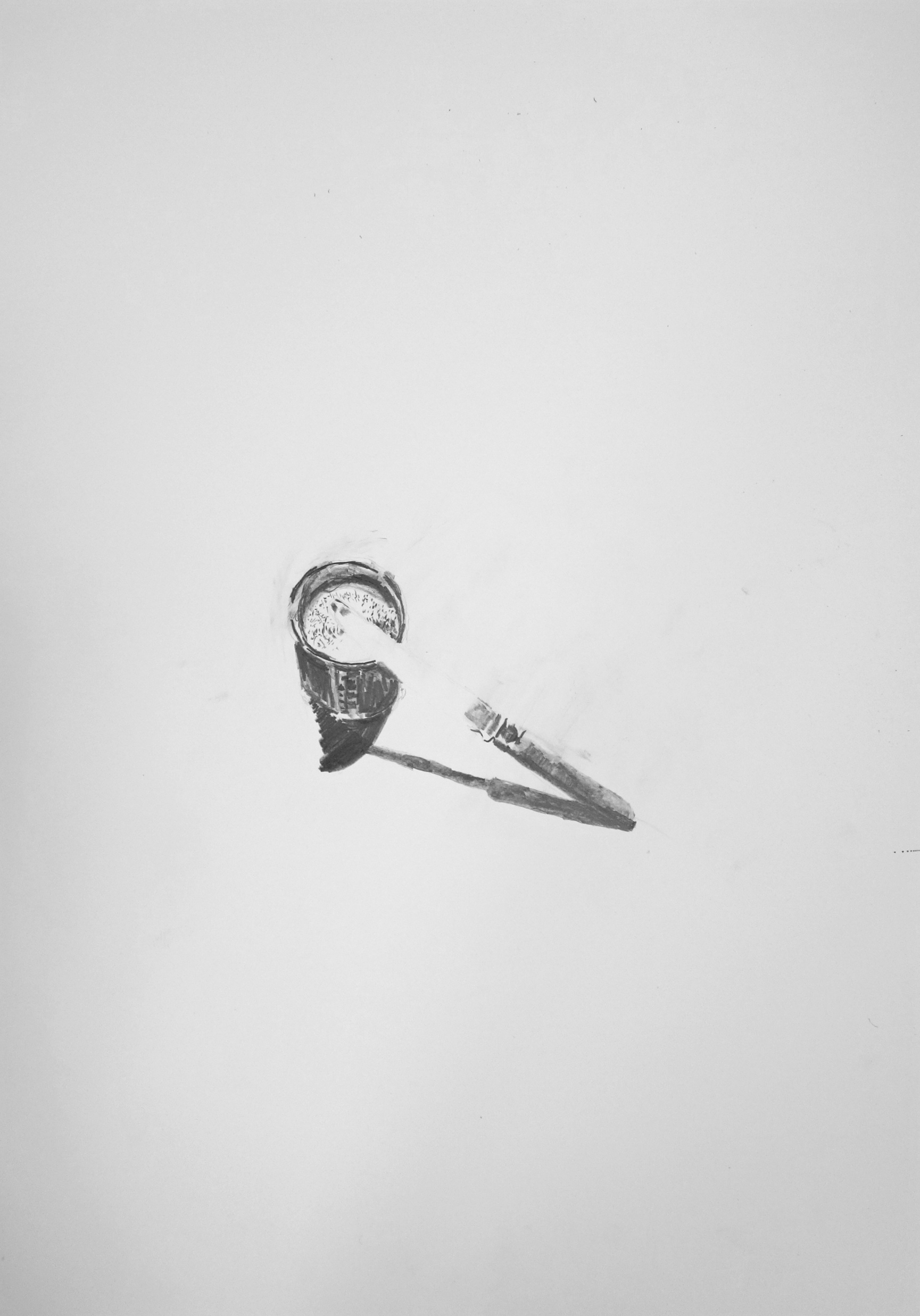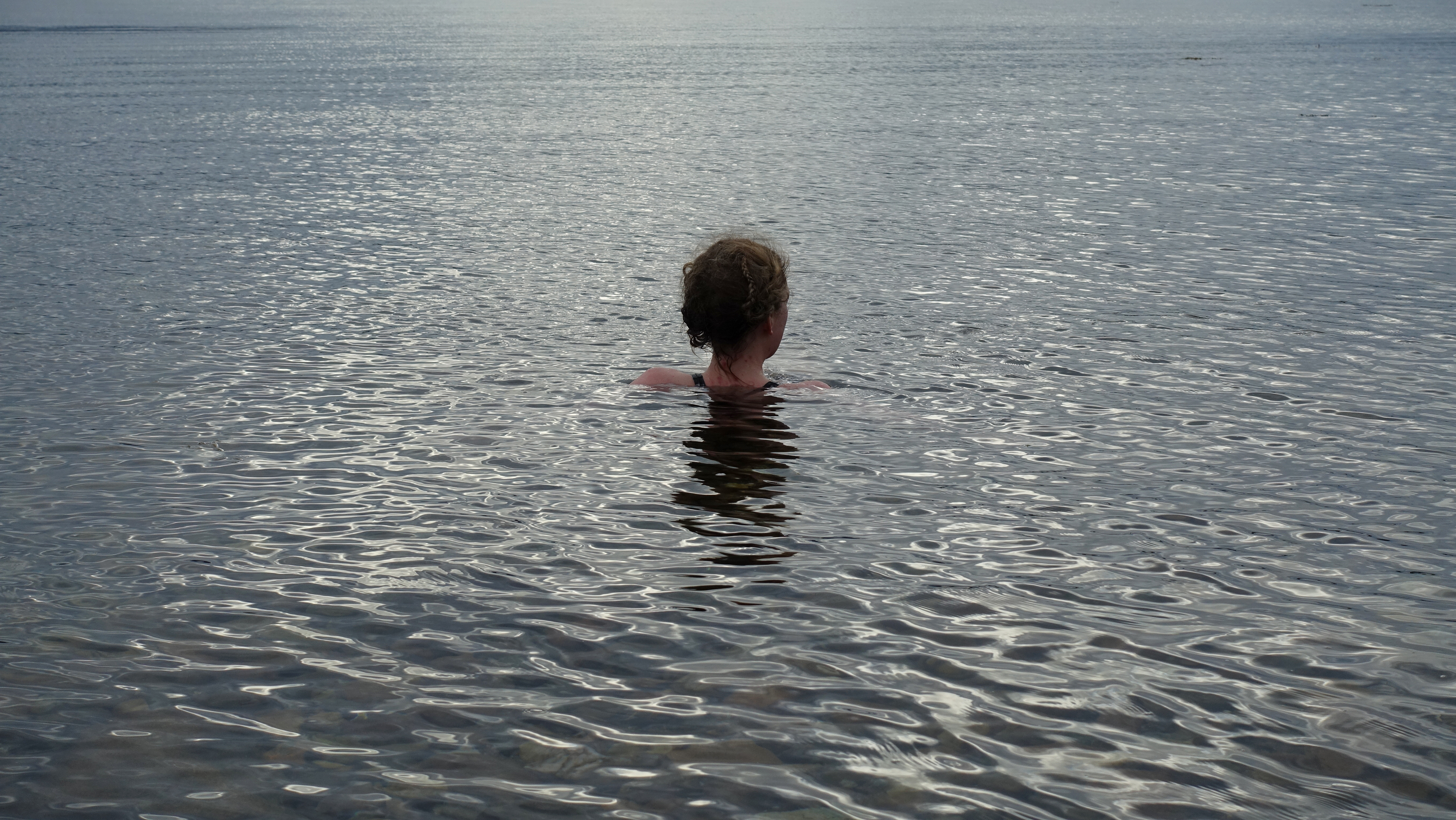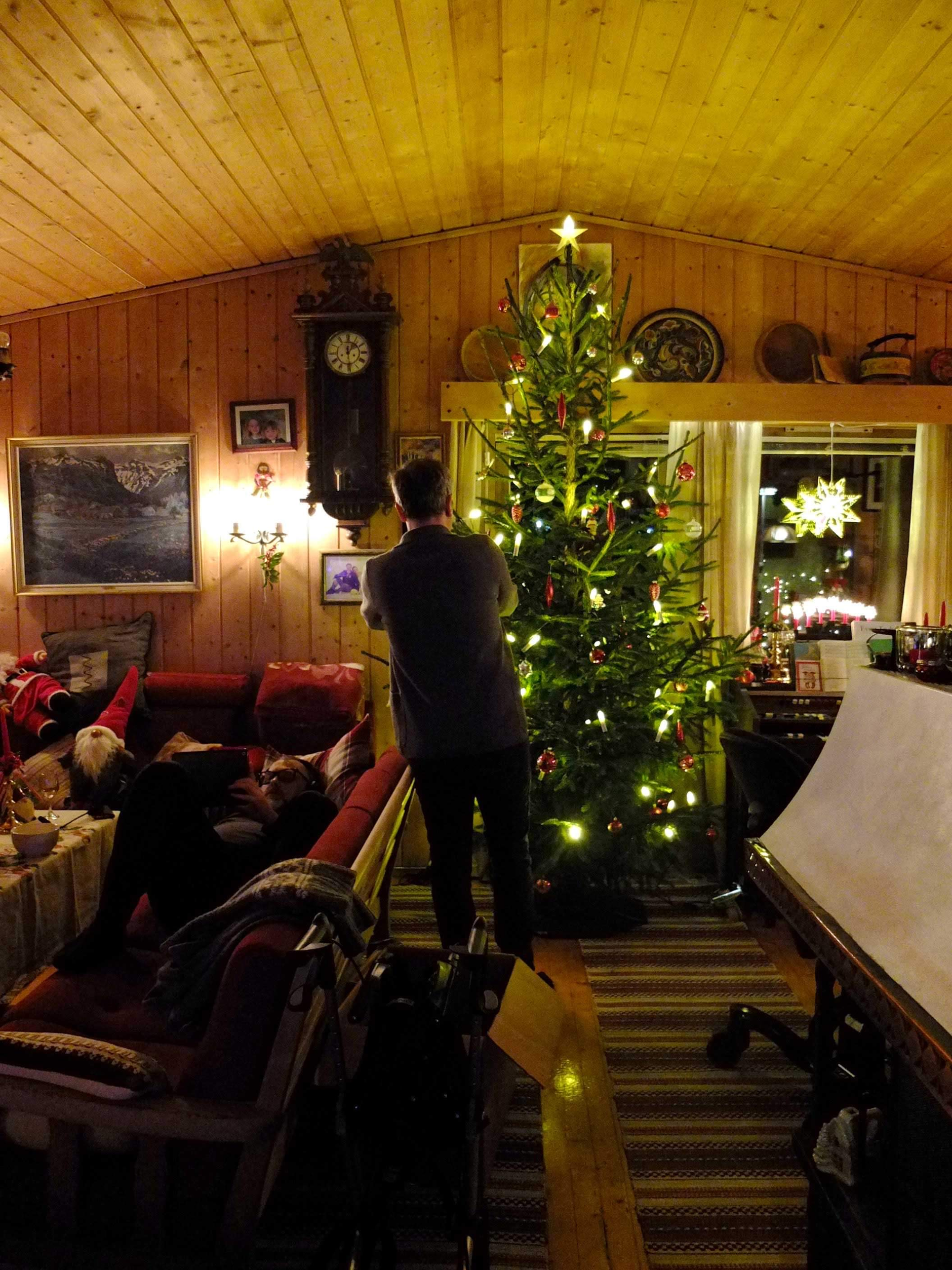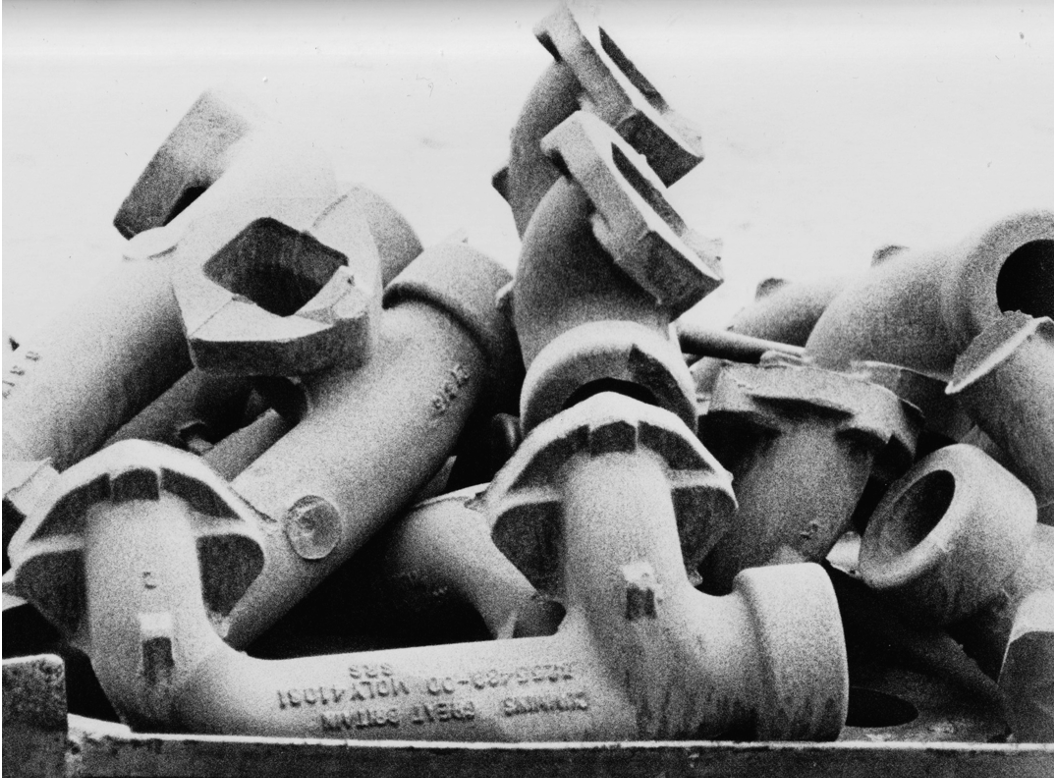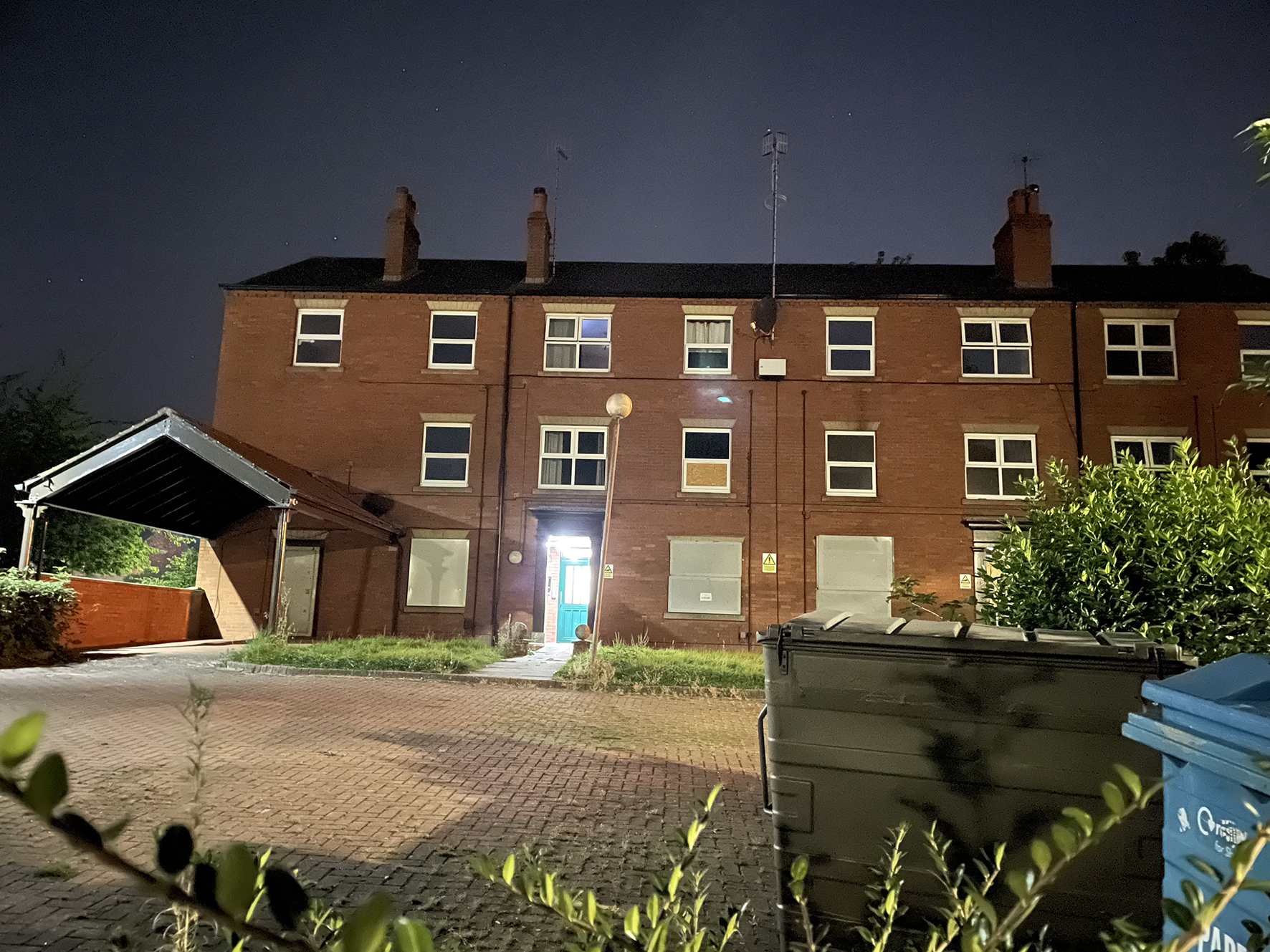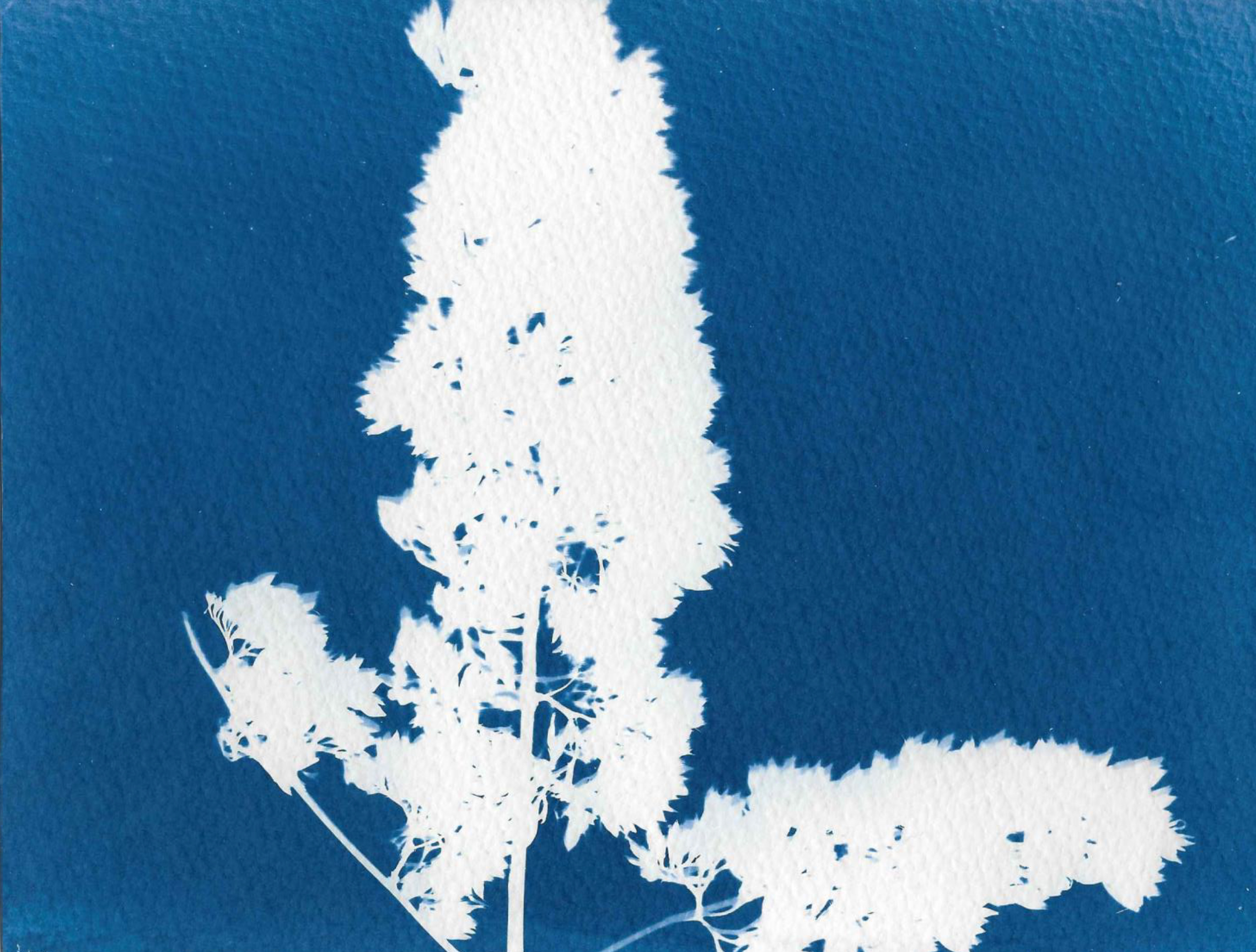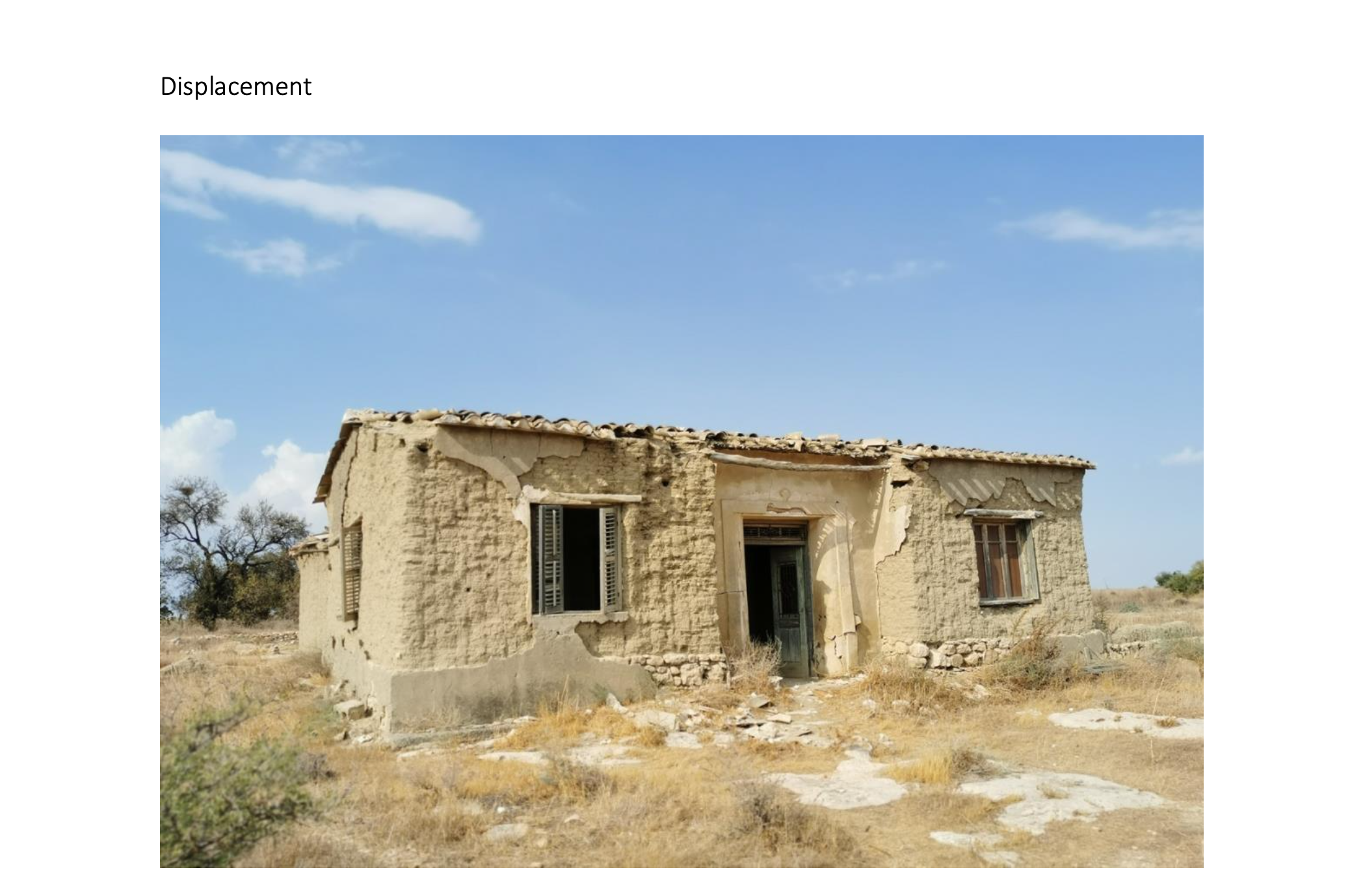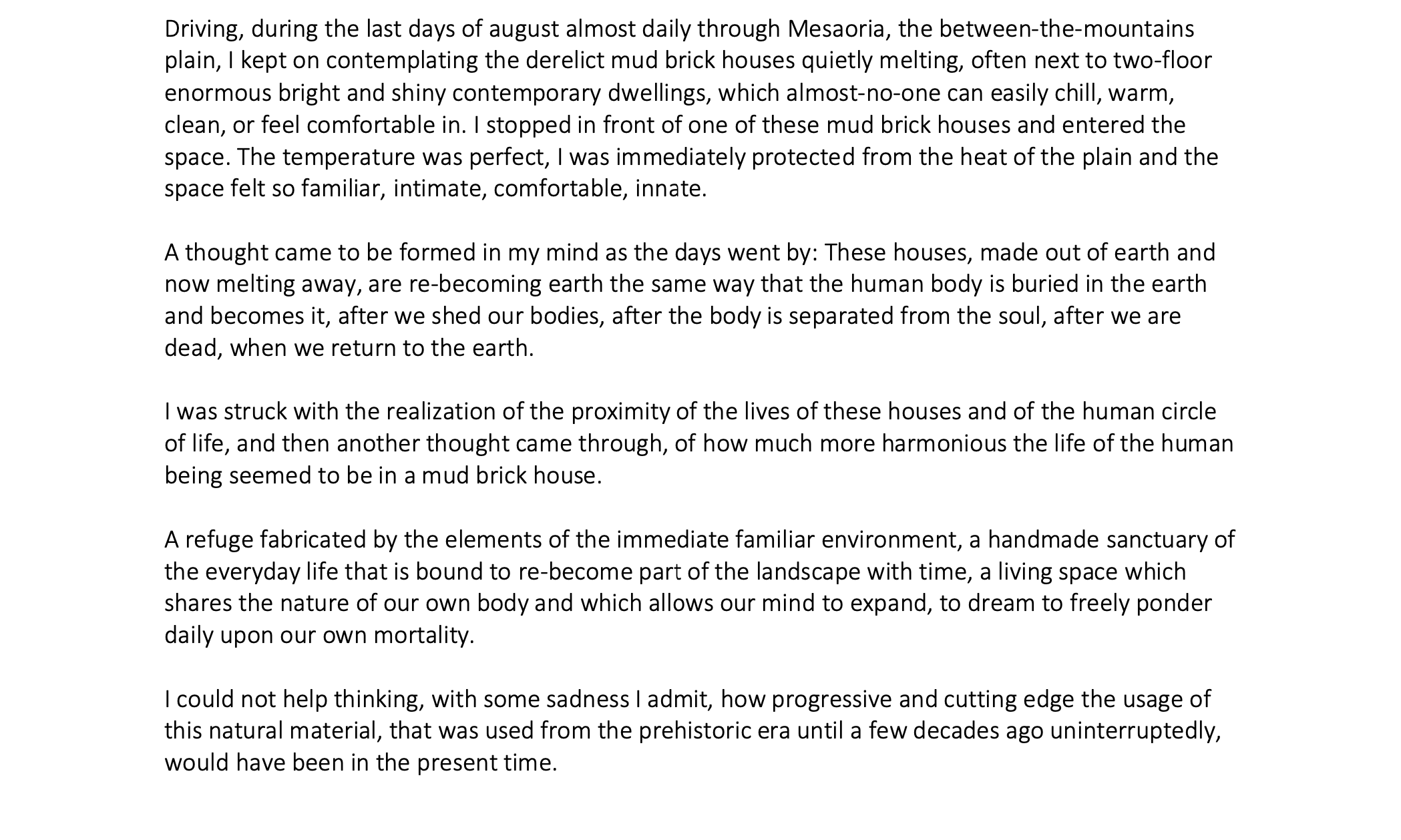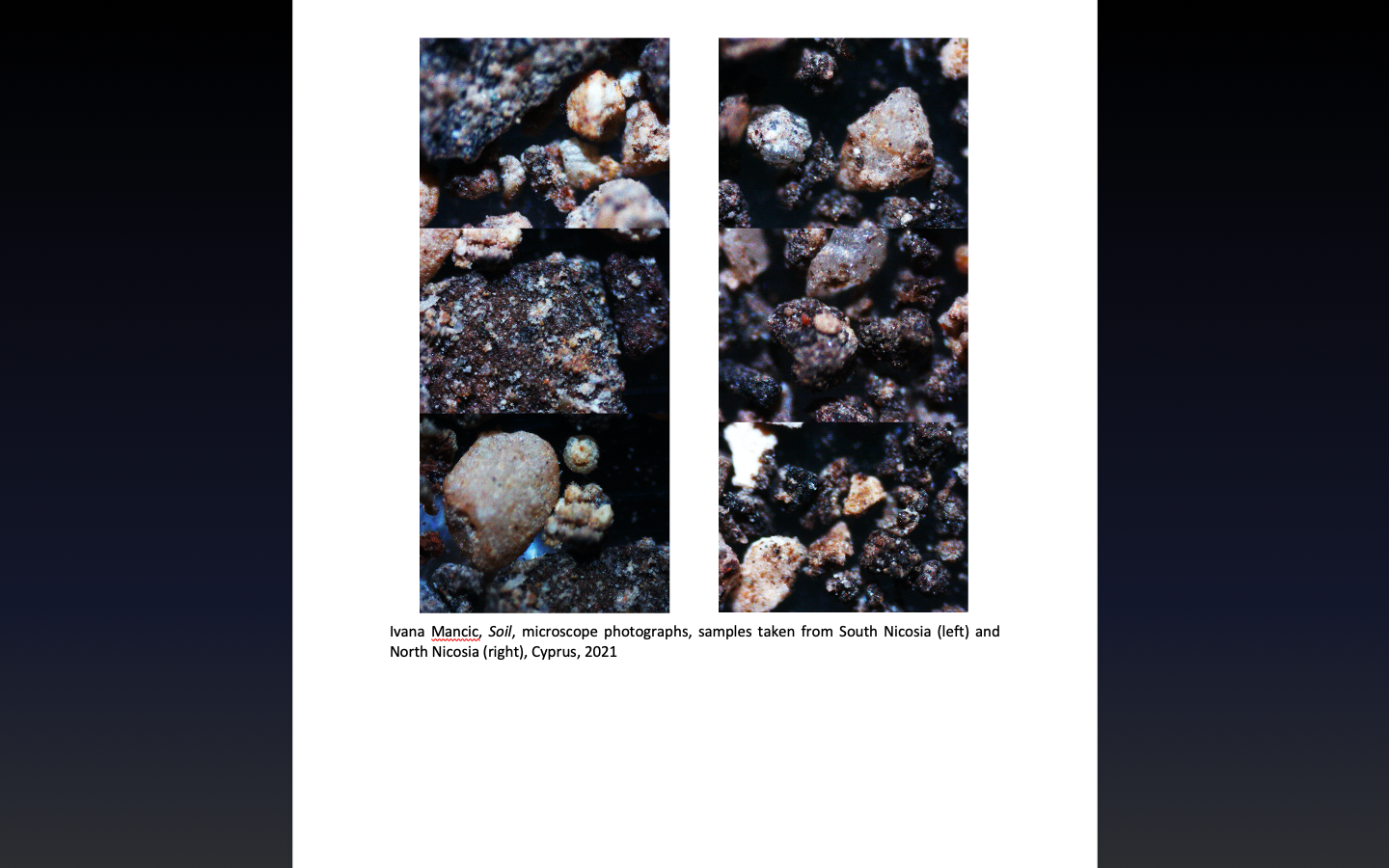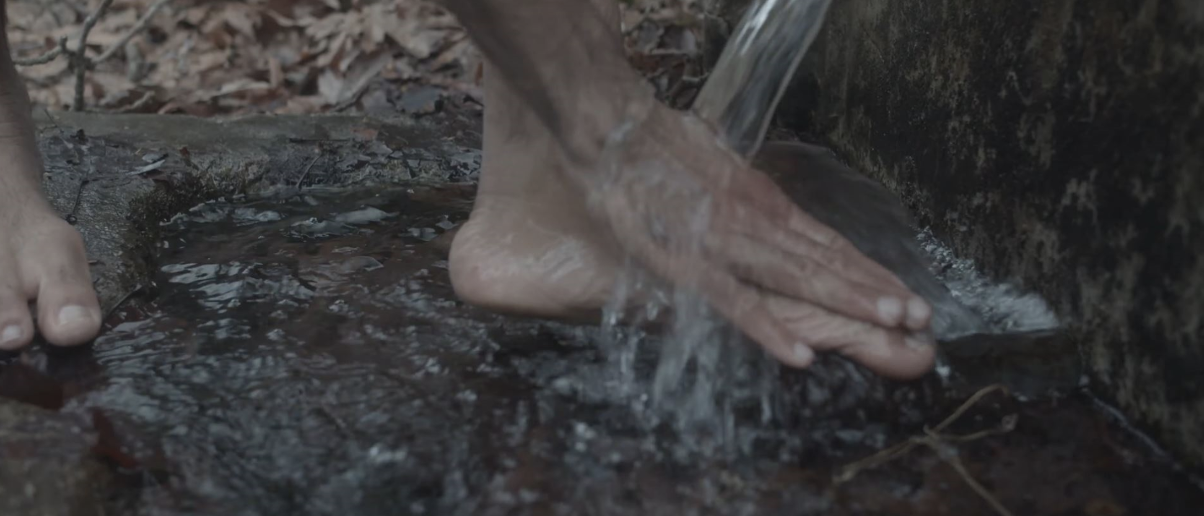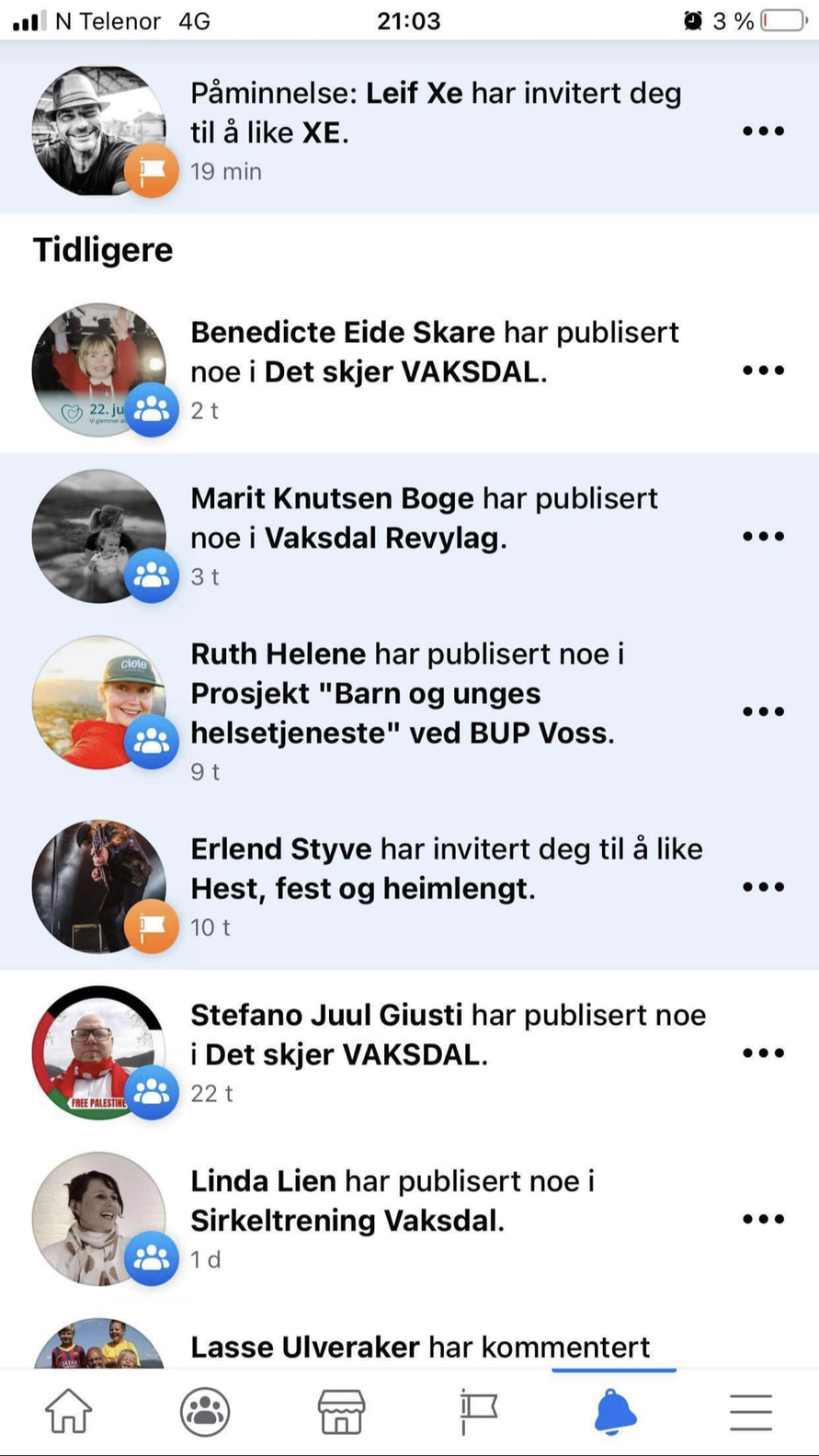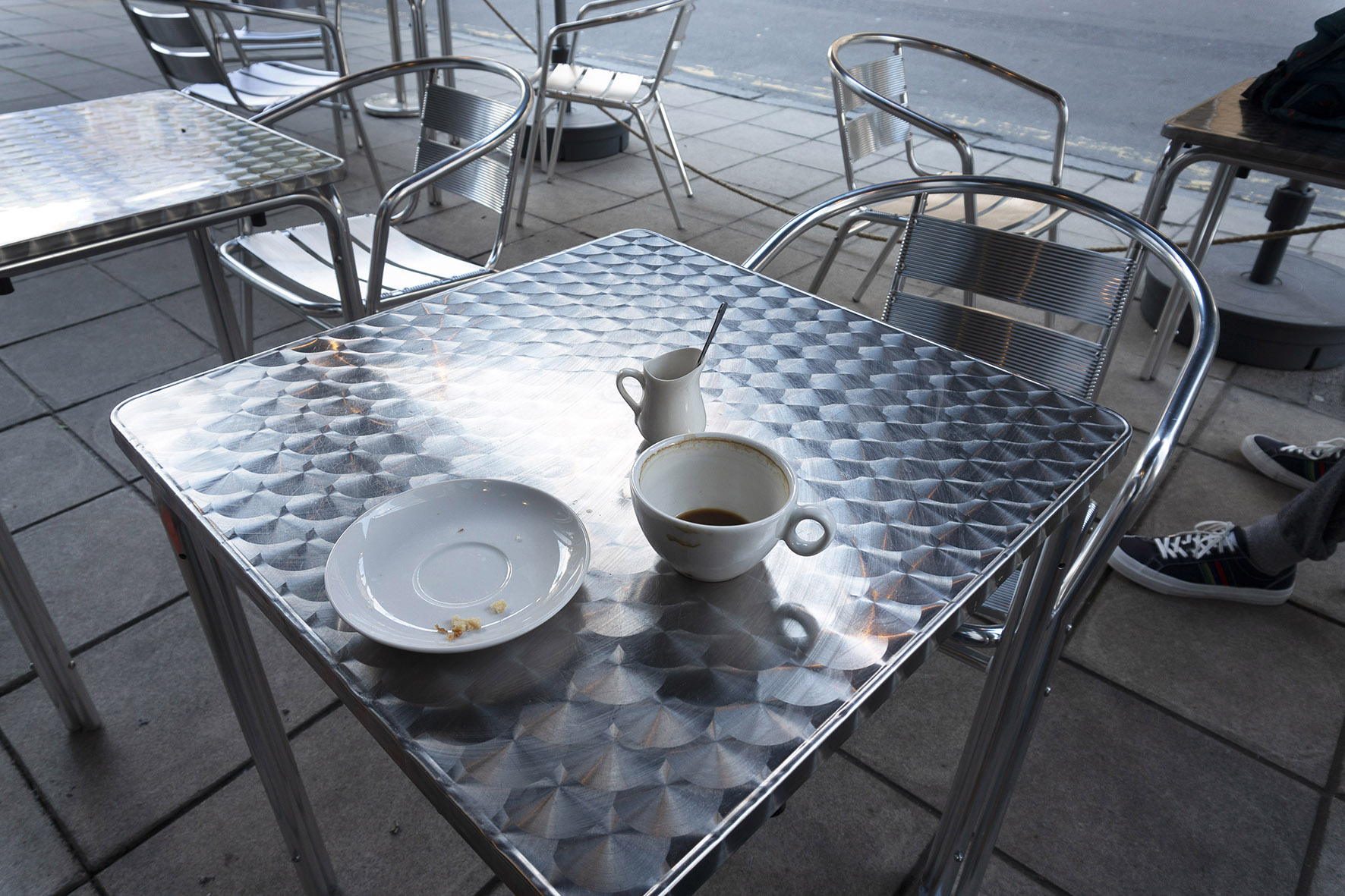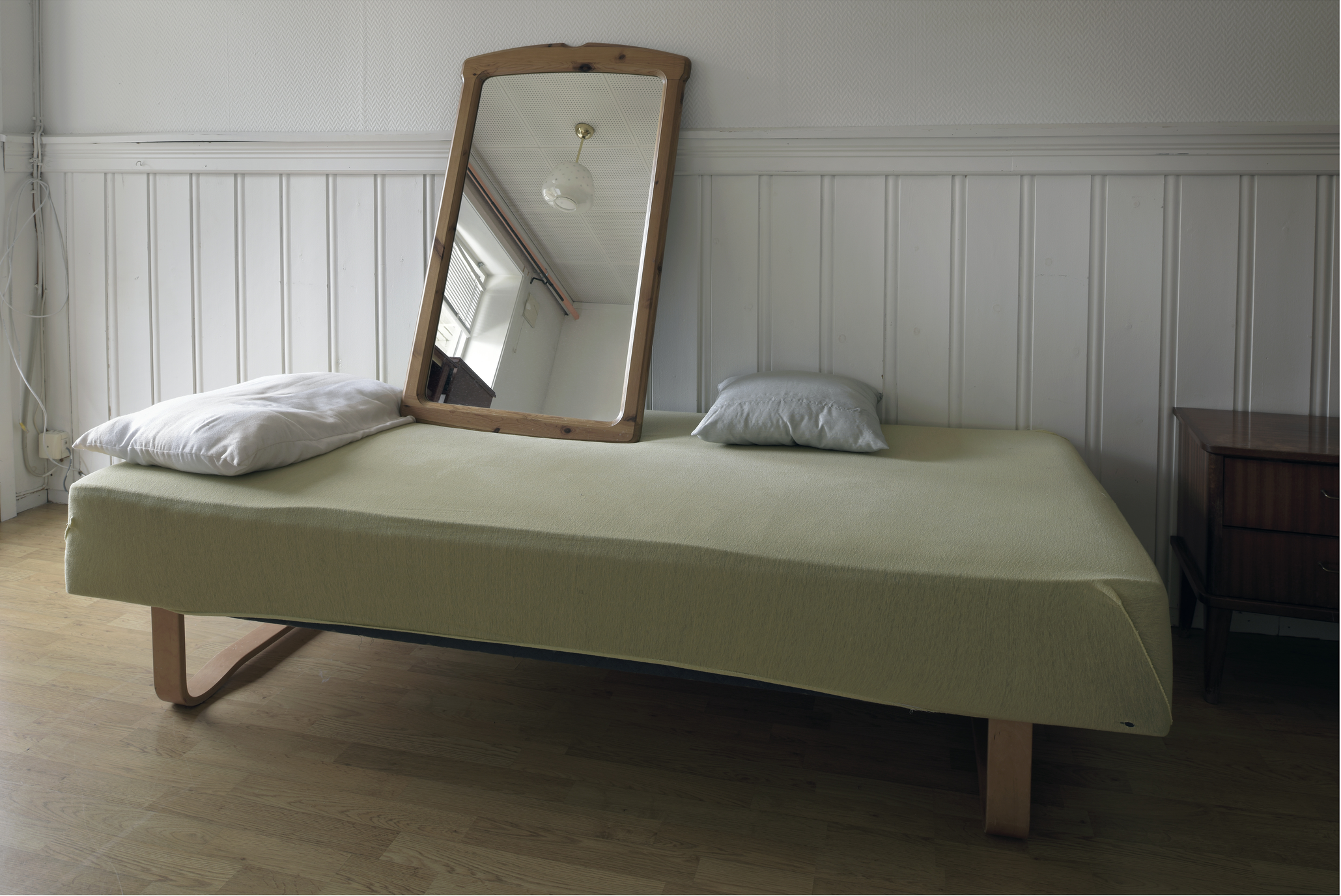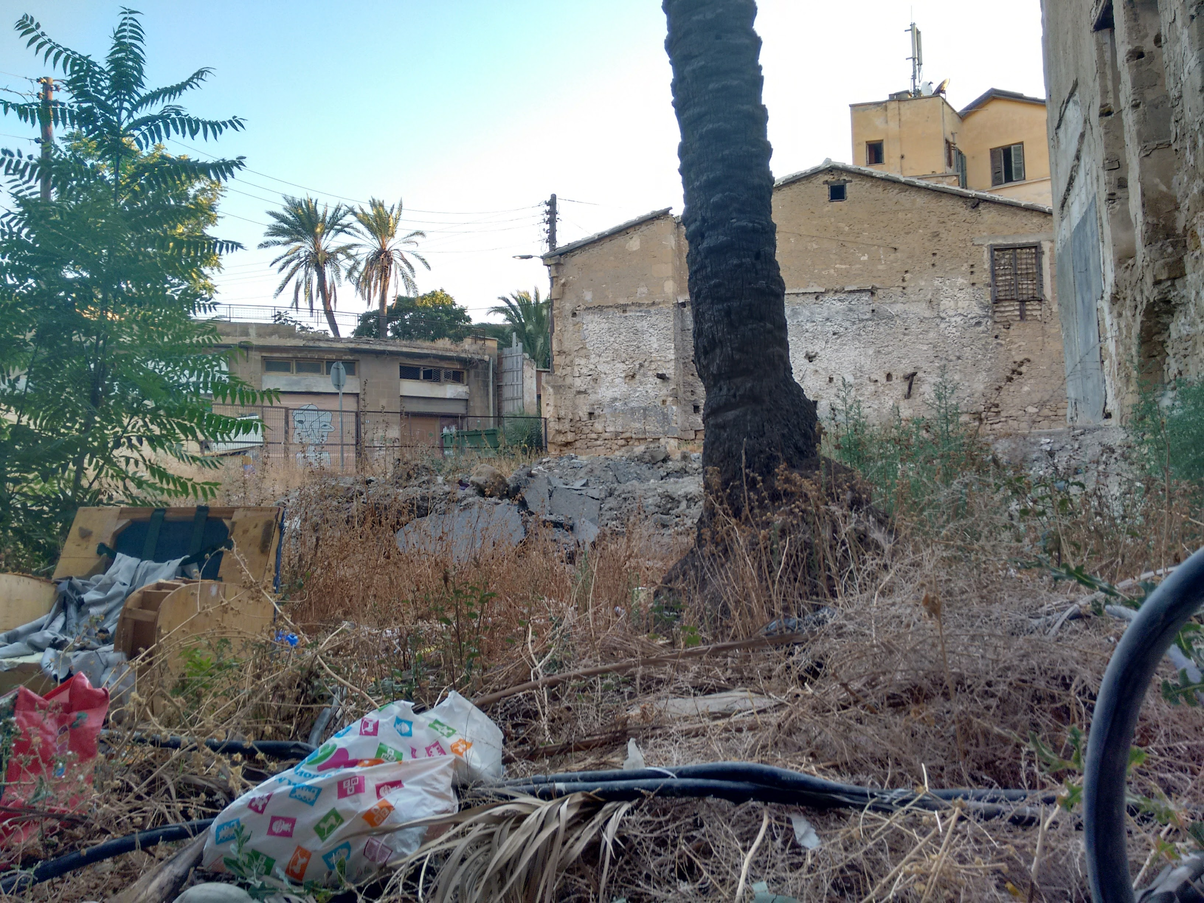Creative Centre for Fluid Territories (CCFT) is a peripatetic international research group, made up of artists, designers and architects, that contributes to discussions about interdisciplinary practices and how they articulate critical insights about place and displacement, place making, marginality, belonging and occupation.
Building on our contribution to Buffer Fringe 2020 – ‘fluid territories: nomadic online dialogue’ – and our physical participation in the festival in 2019 – ‘The Urban Glenti’ – CCFT has developed 'New Fluid Territories: Nomadic Online Dialogue 2' with invited, internationally dispersed, contributors.
An on/offline discussion was hold on Saturday 9 October, Home4Cooperation @ 10.00-11.30 am (Cyprus time).
This was a round table discussion with invited participants and online contributions.
Works submitted by participants in response to CCFT's invitation were available to view at the Home4Cooperation in addition to its online presence here.
To find out more about CCFT please follow this link:
https://www.researchcatalogue.net/view/380422/380423/0/0
Fanouropita is a sweet pie recipe from Greek cuisine and is traditionally a Lenten cake, also called "The lost and found cake." It is traditionally served in St. Fanourios Memorial Day on August 27, given to Greek Orthodox believers as a blessing.
- 375 g seed oil
- 375 g orange juice
- 300 g granulated sugar
- 1 teaspoon(s) baking soda
- 1 teaspoon(s) cinnamon
- 1/4 teaspoon(s) cloves
- 540 g self-rising flour
- 120 g walnuts
- 75 g raisins, (optional)
- salt
To serve:
- 1 tablespoon(s) icing sugar
- mint leaves
Framleis her på veggen, eg / I am still here on the wall.
Film and audio by Thomas Nøkling, Vaksdal, Norway
Navigation
There are 70 displaced dialogues on this one page including images, films, sounds and texts.
Scroll up, down, across as far as you can and unlike a more familiar website everything can be found on this page so do take a good look around.
Films and sounds can be 'clicked' to play.
Its possible to alter the screen size by using command + and - on your key pad.
Professor Nikos Papastergiadis,
Director – Research Unit of Public Cultures,
University of Melbourne, Australia.
A few words in my mother tongue from the section of a Czech-language newspaper that I used to know as Hospodářství (now headed Business):
benefit
billboard
blockbuster
boom
boss
briefing
business
catering
chat
comeback
cool
credit
downsizing
feedback
gender
grooming
hardcopy
hardware
homebanking
hype
image
insider
logout
look
marketing
message
musthave
office
online
primetime
respondent
seafood
showcasing
showroom
startup
streaming
taxfree
teleshopping
trailer
tweet
workshop
youtuber
Pavel Büchler, Manchester, England
I had just left a nearby art gallery after discussing work and ideas in an area of London that I knew well having previously lived there for over twenty years. Turning the corner from Tooley Street I glanced into the dark depths of a tunnel under the railway lines and saw the silhouette of a man sitting quietly eating a sandwich amidst the rubble, litter and puddles.
I was thinking about the shifting rhythms in the body and altered states of consciousness during the liminal phase of labour … as birth-giver and baby work towards separation.
‘Second Stage’, drawing, 370 x 210 mm, oil paint, charcoal and printing ink on canvas, 2021, Susan Roan, Glasgow, Scotland
from:
MATERIAL CONDITIONS AND LIVED EXPERIENCE
"Displacement is one of the main conditions experienced by an enormous part of the Cypriot population as a result of the 1955-1975 intercommunal conflict. Displacement is an indelibly traumatic condition, which in the case of Cypriots even more traumatic, insofar as the majority of displaced Cypriots did not move abroad but rather inside the country with a sense of danger still palpably felt. In fact, for a small part of the population consisting predominantly of Turkish Cypriots, the displacement happened twice, with the second displacement exacerbating the trauma of the first one. Even though by 1980-1985 extreme poverty and deprivation of the displaced population had been effectively dealt with in both, now territorially separated, communities, the fact that a large section of the population in both communities spent 10-15 years in squalid conditions, without normal housing and income, surviving on humanitarian aid of various types, left its mark on the older generations and was passed on to future generations in the form of narratives."
Consisting of two halves of a poem, 'Secondhand Time' invites us into a struggle to understand when only half the story is accessible at one time. The work draws on a series of conversations had over the span of a year, with a diverse group of middle-aged women residing in an area on the outskirts of Glasgow dominated by austerity and forced migration.
'Secondhand Time',
Birthe Jorgensen, Gotland, Sweden
‘The Normalisation of Cyprus’ Partition Among Greek Cypriots: Political Economy and Political Culture in a Divided Society’, Palgrave Macmillan, Springer Nature, Switzerland AG, 2020,
Gregoris Ioannou.

I really don't know what can be my contribution in the DISPLACEMENT.
All the life now is a displacement. Mentally. Maybe I'll write something...
Or photos...
Grigory Valov - Living in Arkhangelsk, Russia
8 September 2021
Between Displacement and Return
Anastasia Shesterinina
“I went to Zugdidi and saw how our houses were burning. We didn’t take anything with us,” a man displaced from the Gali district of Abkhazia as a result of the Georgian-Abkhaz war of 1992-1993 told me in Tbilisi in 2013. Like the majority of Gali residents, he did not fight in the war. “Weapons, money, food, clothes, cigarettes were gathered here and sent to the front,” a displaced woman explained to me, but few people from Gali fought. Until the end of the war, these and other Gali residents who participated in my research did not believe their district or Abkhazia in general could be lost to the Abkhaz side in the war. They lived in the administrative border area between Georgia and Abkhazia, away from the epicentres of fighting, and hoped that the war would not touch their district. Yet at the end of September, 1993, when the Abkhaz forces captured the capital Sukhumi and advanced toward Gali, the siren went off in the main town of the district of the same name and many residents left for Zugdidi on the other side of the nearby Inguri River separating Georgia from Abkhazia—what they called “the peaceful side, across the Inguri.” So did most of the 240,000 Georgians living in Abkhazia, through this and other routes out of what then became a breakaway territory of Georgia and later a de factostate of Abkhazia.
A number of Gali residents—men and women—remained, however, and up to 40,000 returned to their homes in the district at different points in time after the war, despite the looting that took place immediately after the war in what “in our oral history,” research participants told me, “is called ‘a week of cleansing’,” the reprisals against Georgians who were perceived to have fought on the Georgian side in the war, and the obstacles to return created by Abkhaz authorities. Those who returned were displaced again in the course of post-war hostilities, which saw Georgians and Abkhaz on the two sides of the Inguri River exchange fire, groups of armed Georgians cross into Abkhazia to destroy infrastructure, place land mines, and ambush Abkhaz border guards, and the Abkhaz forces push them out in their counterinsurgency-like operations to ‘clear’ the terrain as well as full-fledged fighting in the “six-day war” of 1998. “Among the [displaced] people, there were always rumours,” I heard, “‘We’ll return on February 5th, in a month, etc.’ We had no food in Zugdidi and just waited until we could return.” As a result, some went back and forth across the river, either through the checkpoint or out of sight of Abkhaz border guards and Russian peacekeepers manning it.
Many died during the crossing or were killed and “stayed,” research participants said, their houses burned as the Abkhaz forces sieved through their villages looking for “partisans,” or members of Georgian armed groups who crossed into Abkhazia. “The locals could hide the partisans,” research participants made clear, “Under this pretence, without separating out who was a partisan, who wasn’t, they killed everyone and said they were killing the partisans rather than the locals.” At the same time, the Abkhaz forces sought collaboration from the locals in their search for Georgian armed groups, which kept the locals in fear. The war of 1998 “gave the Abkhaz a reason to once again perpetrate a cleansing,” displaced men and women concluded. The quote I opened with captures this moment and the cycles of repeated return and displacement in the area. It also captures the enduring legacies of civil war as most of the pre-war Georgian population has been unable to return to Abkhazia and the social system underpinning protracted post-war violence experienced by those who did, at least in the early post-war period. What does it mean to live between displacement and return? How are the cycles of return and displacement navigated and normalised? Are there ways forward?
Anastasia Shesterinina, Lecturer in Politics and International Politics, Director of the Centre for the Comparative Study of Civil War and UK Research and Innovation Future Leaders Fellow at the Department of Politics and International Relations, University of Sheffield.
I was enjoying my morning coffee when a horse showed up out of nowhere and shouted; Hi! Let´s rock!
Jani Frotveit, Stanghelle, Norway
The displacement within a language a niggling disturbance in my ears. I seek solace in Adonis the poet’s words, “Every artist is in exile within his own language!” As I wade through languages I grew up in lest they abandon me, I hold onto my colonial language of oppression; now my dominant language. I am acutely aware that languages also move on. I left the Turkish language behind in 1963 on my way to the States. I came back to it eleven years later in London. The Turkish language expelled me; it had moved on! It had transformed itself. I could no longer play with it as I had done as a straight-A young pupil of creative writing. I was allowed back when I started translating poetry in the mid-1980s. And now I can play with the English language I have created. Language is not a birthright. We can be pushed out. We lose our voice, we are silenced.
Aydin Mehmet Ali, Extract from 'Monuments to displacement: Forbidden Zones', 2021
Susan Higgins - Lives in UK
Ethnicities, geographies, languages in which I chose to live, the herstory that I chose to create, that I laid down on the palimpsest of politics, herstories, wars, moralities I was forced to live through… I can only handle once I decorate each word with plenty of… “.”s.
Aydin Mehmet Ali, Extract from 'Monuments to displacement: Forbidden Zones', 2021
from: THE MYTH THAT BECOMES A HABIT
“It is often argued that, when it comes to disputes, truth is the first casualty, as information is filtered by the powers that be and propaganda provides a dominant context in public discourse, encroaching upon private discourses as well. Facts are presented selectively and from each party’s perspective; the arguments of the opposing side or the incidents which seemingly do our rivals justice are silenced; the magnitude of certain events is partially and arbitrarily assessed. History becomes a tool for the interests of ruling powers; historical time is levelled in order to serve national narratives; traditions are invented; heroes fabricated. Public ceremonies and representations are built upon one-sided interpretations, often blatantly contradicting the actual facts, and provide the framework of public debate, marginalising any dissent, critical or alternative voices, dismissing them, presenting them from laughable and invalid to treasonous and dangerous.”
Physical and online event
In Nicosia
Hosts:
Yiorgos Hadjichristou (CCFT)
Ellada Evangelou (Home4Cooperation)
Invited Participants:
Despo Pasia
Stavros Karayiannis
Elena Ioannidou
Maria Georgiou
Neshe Yasin
Aydin Mehmet Ali
Online
CCFT Members:
Johan Sandborg
Linda Lien
Andy Lock
Duncan Higgins
Shauna McMullan
Susan Brind
Jim Harold
with invited guests and artist contributors on Zoom.
Yom Kippur 5782, County Galway
Yesterday was Yom Kippur, the holiest day of the Jewish year, when observant and only-partially-observant Jews spend the day fasting, contemplating their actions of the previous year and considering the year to come. The Day of Atonement is a time for repentance and an essential part of the journey towards acceptance and forgiveness. It is also a day for strengthening the bonds of family and community, and all over the world Jews will gather at synagogue to pray and at home in groups to break the fast together,
I am the only Jew I know in County Galway. Yesterday I fasted alone. I did not go to synagogue; to be honest, even if there were one nearer than two hundred kilometres away, I probably wouldn’t go, because I don’t feel the need to pray. So what do I feel the need of?
Last week, I was in London, with my family. I went to a Bar Mitzvah, saw many of my cousins, caught up on family gossip, spent a day with an old friend, and ate gözleme and drank strong black coffee with my partner outside the Turkish cafe near my mum’s house. Then I returned to my home in Ireland, the place I have chosen to live. I am very glad to live here, with the one I love, in a house that is safe and comfortable, in a country that is beautiful, and that has been good to me, and yet… I am displaced from my family, my people. I hesitate to use the word ‘community’ because it feels too loaded - a community in the religious sense is not what I miss; I am not a member of any such community, at least not in a formal way. I’m not very observant, not very religious, and yet… it is important to me to recognise that I belong within this cultural tradition, one that is dispersed and multifarious, and for me is redolent of home.
A bit of a misnomer this ‘home’ because where is home for me? Born in Israel, a place I can no longer think of home, I grew up in London, where most of my family still live, and the nearest place to ‘home’, although I haven’t lived there in thirty years. There are many reasons why I left London, and yet… I love visiting, love the diversity of cultures and vibrancy of the city.
However, I have chosen to spend most of my life elsewhere, and for now my home is in rural Ireland.
I think of all the people around the world displaced under the most terrible circumstances, and my story doesn’t seem very noteworthy, my displacement not so hard, and yet… it is something. A real feeling; which I have struggled with during this last year of Level 5 Lockdowns and endlessly changing travel restrictions.
Sitting here on a damp, misty Galway morning, with a view out towards the Connemara mountains, I’m grateful to have a home. My coffee is not from a Turkish cafe but from Colombia, via Aldi, brewed in my favourite blue enamelled pot and waiting to be drunk from my favourite Finnish cup …
Neşe Yaşın is well known on both sides of Cyprus. She is a POET, whose work has been translated into more than 30 languages. She studied Sociology in Ankara, Turkey, and teaches language and literature at the Turkish Studies Department of University of Cyprus. She also writes a weekly columns for Yenidüzen newspaper (Cyprus).
Despo Pasia is an Art Educator in public primary schools and a Museum Educator. She collaborates with cultural institutions and takes part in research programs as cultural heritage education and art education specialist. She is currently writing her PhD thesis on children's encounters with photographic collections.
Stavros Stavrou Karayanni is Associate Professor of English at European University Cyprus. He publishes on culture, gender, and sexuality in the Middle East, often through a postcolonial and queer frame of investigation.
Elena Ioannidou is a sociolinguist and a linguistic ethnographer and an Associate Professor in Language Education and Sociolinguistics at the Department of Education, University of Cyprus. Her research interests focus on the concept of a social theory of language, on language variation and on studying linguistic communities in politically sensitive contexts. She has extensively investigated issues of language and identity among Greek-speaking Turkish Cypriots.
Maria K. Georgiou is co-directorr of Public History. Maria is a history educator and researcher, and holds a PhD in History Education from the UCL Institute of Education. Her research work focuses on the purposes and dispositions of history education, including history in the classroom, and in public (i.e. the uses of the past, collective memory, and identity, and the relationship between them).
Aydin Mehment Ali born in the undivided Nicosia. She lives between Cyprus (North and South) and London, where she sought refuge from war; An intellectual activist, anti-racist and anti-militarist writer, translator, educationalist, traveller and cyclists, she set up and managed numerous projects in London and across Cyprus focusing on women and young people. Her work appeared in many international anthologies, journals and magazines. She has performed across the world and taught at universities.
‘The Normalisation of Cyprus’ Partition Among Greek Cypriots:
Political Economy and Political Culture in a Divided Society’,
Palgrave Macmillan, Springer Nature, Switzerland AG, 2020.
Gregoris Ioannou
The piece of video I am sending you (a one minute fragment) is from an ongoing video work I have been engaged in for the last 3 years. I am interested in what constitutes a sense of place and the ineffable feeling of being attached to a place and have thus embarked on a long term practical project. It involves a neglected old church grounds in inner city Nottingham which I have been visiting and filming every few days. I am also linked up in the project with a wider group of artists doing similar things with their own particular spaces around the country.
https://www.whenthefuturecomes.net/
The context of the ChristChurch Gardens/Kabul video clip is that a family from the Mellors school, which we had been working with in the Gardens, were suddenly trapped in Kabul airport. I was alerted to this by the appearance of mobile phone video on the television news. The gestures of the phone camera collapses the distance and unites the spaces, displacing the anxiety of one context inside another.
I’ve just returned from Lysos, Paphos. A Cypriotgreek village. Surrounded by Cypriotturkish villages. Melandra, Meladia, Istingo, Sarama and others; all totally abandoned. I stay with friends in Lysos. Meandering through its narrow streets gazing at empty neglected semi-abandoned houses with owners in South Africa. Descendants of the displaced migrants from the 1960s. I have walked around these and other villages for years. Listening to their silence. Summer or winter. Ruins. Collapsed buildings. Vegetation covers what remains. Rue overruns a garden having driven out all other plants in Melandra. A woman aware of its medicinal properties for women’s ailments lived here flashes through my imagination. Melandra has two sacred buildings. A church and a mosque. Both deserted. Silent. Apart from the cooing of the occasional pigeon that visits. They are one meter apart. Almost in each others arms. Last month the spire of the minaret was knocked off. High winds the culprit not nationalist fervor. The old school building now a home for sheep and goats. In the spring they float in a sea of green and wild flowers.
It fascinates me that I am attracted and attached to these places. Monuments to displacements. I seek them out. The need to find them, make them visible, be a witness, drives me. Silent places, the margins, footprints of displacements provoke the imagination. They provoke my writing. I heal the buildings.
People arrive… The stories emerge.
Land is a fragile conversation in Cambodia, for what it holds in legacies of conflict and genocide, but how those politics spill into the now. Lakes become prime real estate pumped with sand, some of which is stripped from the Mekong river. This dredging impacts the fragile ecosystem as well as those who reside on the riverbanks, which slowly crumble. The sand joins the land, removing key points of drainage, and whole communities are shifted.
I didn’t realise until recently how interconnected our displacements had been. I left for the States mid-August 1963. I didn’t manage to say goodbye to my grandparents. My grandmother was still cleaning hotels in Platres, on the mountains. She left for Limassol in mid-October, after the tourists went home, to work in the hotel of the cabaret artists. And I started school just outside Rochester N.Y. By December granddad was warned by a Cypriotgreek friend to leave Platres: the fascists in EOKA were coming to burn down their home. He left in fear of his life. By Christmas their house was burnt. They found refuge in a small house in Limassol while I heard on the radio of the killings, the fighting across from our house in Nicosia… not knowing if my family was alive…
…our individual displacements were complete. They stayed in Limassol. I in London. Until I moved my work to Famagusta forty years later…
25 September 2021
Nicosia
Displacement: In Praise of the Dry Riser, 2021
A dry riser is a system of empty pipes in modern flat blocks. Fire fighters fill them with water when there is an emergency so that they can use a high pressure hose on the higher floors.
Most dry risers remain unused, the boxes rusting away in the weather.
You probably never notice them or, if you do, think of them as ugly red boxes. But each one is monument to forethought and care, understanding that shit happens and, when it does, you need to be prepared.
The time to prepare is before the emergency.
The time to prepare is now.
Neil Scott, Glasgow, Scotland
Displacement as the sense of being somehow slightly apart from place; misplacement as the wrong place. Displacement as something eerie or alien. The eerie is described by Mark Fisher as a feeling within a landscape or place that something is present when there should be nothing, or that there is nothing when there should be something; the failure of absence or the failure of presence. Applies to how city centres and other previously busy sites/sights looked or, more properly, how they felt, during covid lockdowns; feeling eerie through lack of presence. A reminder of the role of people in how a place or space presents itself. In thinking about people I’m also thinking about the body and embodiment and the idea that to experience the eerie, to feel it or sense it in an environment (rather than through media), requires the person affected by the eerie to be part of the displacement. Could their presence be called a failure of absence?
Kevin Hunt, based in Nottingham, United Kingdom
Is there such a thing as “planned displacement”? Where we collude, acquiesce, instigate? And what of “forced displacement”? “Visible” or “invisible” displacements?
Does “displacement” create or lead to victimhood? Is it a hairline fracture to liberation?
Aydin Mehmet Ali, Extract from 'Monuments to displacement: Forbidden Zones', 2021
“Displacement” is my inheritance, forever in my life and in my writing.
I want to think that no “forced displacement” is planned! The speed with which you are sucked in destroys all order and plans, decisions are made at speed, shocked, traumatised, you don’t dare acknowledge. You are left with the loneliness of the sole spectator watching yourself being dismantled. Life sabotaged.
I become a witness to lives lived in our parts of the world as a post-conflict society survivor. Militarised societies, invasions, permanent wars, politics and multiple oppressions. My daily panorama of displacements and the fall out. Acutely aware that my constructed identities and values are constantly challenged, denied, redefined, in flux, without my agreement or consent; norms and moralities, geographies and communities are imposed. And absurdity is normalised.
Why stay still? Without movement, no perspective. Who says you chose where to go? A little further down a rabbit hole; shuffling back and forth in an echo chamber. Disruption, upset, outrage, shock are the vitamins of the mind’s metabolism. If you’re comfortable and in agreement, feel the sands wetting, the air warming, the chair creaking. It’s nice to stay still, to re-read the text. I hope that someone throws a book at you.
From the Zoom chat:
As a comment/response thinking about the body as both fluid and constant, a mixture/blend of sensations and experiences where past influences the future within the present/ongoing (constant?) version of the self. Time is one fluid element but we experience it topologically/subjectively; an experience that lasts seconds may feel like minutes or hours (or vice versa); a memory may feel contemporary even from the deep past.
Kevin Hunt
Rev Leist heat Moon wrote a book called Prairie Earth. Amongst many other pages, he describes the prairie grasses growing higher that a horse’s back such that a person riding the horse would have a view of the top tassels of grass as a sea. And when the horse trod through the thick dense grass, the path behind would close up and the path ahead would part. This for me is a strong spatial model of fluidity.
Julieanna Preston
Relational positioning ….. its brilliant how everyday life has folded into this mornings presentations. Cyclists moving past, couples and individuals walking moving through the street, people stopping to listen in, cars and vans driving past, the barista’s serving drinks to customers, people joining in from the edge for a few mins or more……. A plant pot being moved to stop notes / paper from being blown away. ….. I’ve loved watching and thinking about this.
Shauna McMullan
Displacement
Displacement by poverty. Economic migration. People moving around the world to seek better opportunities has been with us since the beginning of human history.
30 million European migrants entered the US between 1836 and 1914. Of whom 5 million passed through the UK. Of whom over 3 million came through the Humber ports of Hull and Grimsby. Of whom 1.71 million came through Hull between 1880 and 1914. (Evans, N. Journal of Maritime Research 2011)
One of the first things that landed in my head when I started thinking about the word displacement, was Christmas trees. I love Christmas. Seriously LOVE IT! And I love Christmas trees. But there is always a bit of sadness connected with them.
They are taken from their natural place, to be our pretty ornament for a few days, and then they are garbage. When I was young, I read H. C. Andersens´"The Fir-Tree"; a story about a young fir-tree so impatient to grow up; so anxious for greater things, who gets chosen to be a Christmas tree. It is a beautiful story about a young creature that gets displaced, experiences great wonder, and heartbreak. It broke my heart.
Anne Angelshaug. Vaksdal, Norway
A film by Andrea Moneta (he/him), born and raised in Rome, Italy; architect, musician and researcher, voluntarily displaced in UK since 2014.
A Line of Coir
A fragment of coir brings a memory of a line in the sand, woven by women, from the husks of coconuts brought down to the sea.
The line grasped by fishermen to pull their nets, gathering fish.
A tsunami -displaced plates, waves, detonating across the world.
A line of destruction in the sea. Loss of nets, boats, homes, lives, fragments -displaced from the sea.
Words by Neil Butler
Point of Embarkation (Hull Docks).
Mixed Media. 76cm x 56cm.
Stephen Todd, Sheffield, United Kingdom
Love displacement
By Constantia Soteriou
My son kills me every day, little by little. Every morning, he removes a part of me.
A small part, so it won’t hurt too much, so it won’t scare me. Small nips that
feel like stings. Intimate. He kills my parts every day and he looks at me.
Does that hurt, mommy? And then: I love you, don’t you ever forget that.
And then: Remember, I love you very much. I know, he loves me very much.
To the moon and back, isn’t that what they say? And then back again, and all
around the world, filling it all with love a thousand times over. But this here,
this killing, is a whole other story, it has nothing to do with love. It’s just how it is,
he just has to do it. Every single day, he has to cut a piece of me, he has to kill
me a little. Every single day, he has to kill a piece, no matter how small and insignificant. We both know it. When he extends his little hands to cut me,
I look at his small fingers and kiss his nails. I lean over so that he can reach me,
I turn my back. I want to make death a little more convenient. Sometimes I’m
in a hurry and I tell him to work fast and get it over and done with. He can go
ahead and kill me if he must, but I really don’t want to be late for work. After all,
when he leaves for school, I still need to head to the mirror. I need to look at
myself in the mirror, urgently. I look for my missing pieces. I take a good look
at myself to see how much of me there’s still left. I run my hands all over my
body looking for the missing pieces. I locate them one by one. Little love holes.
Barely big enough for his fingers to fit inside. To the moon and back, and back
again, and all around the world, filling it all with love. Does this hurt, mommy?
I love you.
The A5 trunk road is a busy artery slicing through the English Midlands, linking the lands of Mercia with the great metropolis to the south and the Welsh borderlands to the west. Roughly midway, it brushes the edge of the county of Leicestershire, forming a border with Warwickshire, at the site of the High Cross. Once thought to be the centre of England, the High Cross marks the intersection between Watling Street and the Fosse Way, one road pushing north to southwest the other south to west, forming an X across the English landscape. Both Watling Street and The Fosse Way mark existing ancient trackways, adopted and improved during the Roman Occupation of Britain. My 94-year-old father, no stranger to the UK road network as a retired lorry driver has a passion for history and a strong belief that he once trod these roads in a former life as a Roman legionnaire. He recounts the story of his maternal grandfather who walked from France, leaving behind his life in a travelling fair in search of something or someplace more settled, someplace to become rooted, someplace to rest. Isn’t it usually the other way round? Leaving the city to follow the romance of the fair?
The story goes that having made his way to London, he struck out on the Edgware Road (Watling Street), destined for the industrial north and Sheffield. After several days of walking and sleeping in hedgerows he reached the High Cross. This is the point at which the journey north switched to the Fosse Way. Whilst born into the fairground life, his destiny lay elsewhere. His draw to the north was slowly losing its shine as accounts of the blackness of the steelworks and heavy industrial pollution of Sheffield reached him. Instead, he decided to settle in Leicester to become a foundry worker, serving the growing railway network, making wheels and axles for fire breathing iron horses. Displaced but grounded, drawn to a sleepy hamlet on the outskirts of the city, he also plied his second trade as a musician in a local public house with its own history of welcoming travellers dating back to the 1650’s.
Exact dates are sketchy but working back from my father’s year of birth the best guess would place this walk along Watling Street and the Fosse Way, around 1890. This act of displacement, in search of something, in search of the elsewhere, somehow remains through stories and aural histories. Through blood and bone, the urge to move, the unsettled nomadic drive to be elsewhere returns in occasional refrains as restlessness in current and future generations. The waters may seem calm, but they are in constant motion. Blood in constant motion, thoughts in constant motion, never really settled or rooted to one spot, always only temporary; yet somehow held by ties which defy the urge and the right to roam.
I think about this story as I too walk a small section of the Fosse Way, close to home, on our routine morning dog walk. I wonder if the street was cobbled back then, if the buildings I pass were nothing more than blueprints, foundations or newbuilds. I wonder if he stopped at the church on the corner, once Catholic, now Ukrainian Catholic, representing one of the many displaced communities which have been drawn to this location. We pass the shop where my mother was born to another displaced family, Roma Gypsies fleeing persecution. Passing the temporary school, built in 1886, which still educates the local children, to our home, Dunchurch Cottages, built in 1886, named after a Warwickshire Village, a stone’s throw from the original Watling Street route.
This is one of many stories of displacement and migration in my family history. Irish, French, Romany and African paths crossing and settling in the same relatively small geographical area, through some kind of swirling magnetic pull to the riverside. This includes the story of a failed migration to Australia in the 1970’s, on account of my adopted brother’s skin being a few shades too dark for their immigration policy.
The power of falling water reaching the same confluence, feeding the same river from different points on the mountain draws us to this shared history.
The mountains will find you everywhere.
As I write this story, over a cup of coffee, I catch the 10am news:
- Hundreds of women take to the streets in Kabul, walking together in protest at the newly formed all male Taliban government.
- Record numbers of refugees cross the English Channel, the home secretary’s response is the threat to withhold £54millon of support for French border forces.
- The 2015 Bataclan massacre terrorists finally face trial after a different kind of walk, one with violent intent which saw the death of over 130 people.
- Anthony Gormley reveals how he likes to give guests a lump of clay after dinner, rather than a brandy, to encourage them to explore their creative side.
Fiddling with clumps of earth whilst Rome burns.
DISPLACEMENT of the ring.
Filigree in the wireless world.
I’m Marija Miloshevska based in Skopje, North Macedonia, on the Southeast Europe in the Western Balkans (born in Yugoslavia). This is my short, ironic and ‘real’ belonging where my place and displacement have been through the past 40 years.
As a jewellery storyteller and explorer, my latest interests are the focus on the present moment of the jewellery message in the digital world and how it can spirituality be transferred through the digital world, or, in other words - are we buying a message and making with it memories full of beliefs? Are the digital and the spiritual world one same thing?
A displacement of the object in our daily life, for example a ring, makes a wide impact in our life when we touch, buy that object, and (dis)place it on the finger. In this way, that object becomes a spiritual connector between the material world and the process of creating memory. The displacement of an object gives a huge importance of the message that this object has. We are witnesses of jewellery commercials full of proclamation of eternal values and power. What is the ritual procedure in a digital (wireless) world? How can the filigree wire fit in the digital net?
The ring as an object is a universal or unisex jewellery, but not always has an objective meaning. The essential meaning the ring possesses is the symbol of a circle and the reminder of the timeless and endless meaning of life. However, the role the ring possesses is an element in the process of creating the culture, and in the same way it dictates the universal cultural patterns.
By reading an article on internet, I found a very interesting information about the ring of the Pope and the role that ring has in this pandemic time or the power that is broadcast trough that object – the ring[1]. This example opens many questions about the displacement of the ring in certain times. Before the pandemic, this ring was kissed from the people who believed in the power that this ring has, but today because of this pandemic it is not allowed to kiss the hand and the ring of the Pope, because of the possibility to spread the infection. My question is: are these new displacement practices in the religious culture? Whether this ring will have the same meaning and power for the people if it is unavailable for them to touch it or kiss it? Is this a new displacement practice of the (un)applied ring in religious rituals?
(Is this example - literally displacement of the ring? :)
This is a short and quick idea and photos that was showing in my mind (and my phone) when I started asking myself about the displacement issue. I feel that many questions and sparkles are now open about the present power of our daily objects and their function in the circles of displacement.
Marija Miloshevska,
Skopje, 11th September 2021
'Mental displacement. Sexual displacement. Informational displacement.'
Vsevolod Vidiakin, Arkhangelsk, Russia
Pam Skelton
'We Refuse to be Scapegoats', 2021
Two excerpts from a 4-channel video installation. Soundscape by Wayne Brown. Curated by Iliyana Nedkova.
My interest in the aftermath of WWII and Holocaust Europe and its legacy have been explored in several pieces of work over three decades and explores ways to reconnect contested histories. The exhibition ‘We Refuse to be Scapegoats’ gradually emerged from the retrieval visits to Poland in the 1990’s and the censorship that I experienced in Warsaw while undertaking a project of Polish memory of the Warsaw Ghetto by people who currently lived there at the time of my visit in 1996. While Polish residents of the former ghetto willingly contributed to my project, the curators of the history and art museums were seriously opposed and the project was eventually shelved. This incident was the catalyst that drove my research on the conflict of memory in Israel Palestine and culminating three decades later in ‘We Refuse to be Scapegoats’.
‘We Refuse to be Scapegoats’, 2021 (duration 15.06) takes the form of a dialogue across generations and nationalities of inspiring women, feminists, political commentators, and youth activists. The use of juxtaposition grew out of ways to explore some of the commonalities and differences that might exist between past and present struggles for liberty, freedom, and justice such as what might be learned, who may inspire recognition and confidence and why.
Changing the story from trapped Asylum-Seekers to the Future of Love: a rope-making workshop with Lital + Vinas
Join us in a circle to talk and make rope.
Background
Ben Haim, L. (Aug, 8. 2020) 'My Husband And I Have Nowhere in the World We Can Safely Live Together' Newsweek. https://www.newsweek.com/i-am-israeli-partner-iranian-no-country-live-together-1519988
Ben Haim, L. (2020) Support stateless family. GoGetFunding. Retrieved September 16, 2021, from https://gogetfunding.com/support-stateless-family-hand-crafts-rewards/
Federici, S. (2018). Re-Enchanting the World: Feminism and the Politics of the Commons a book by Silvia Federici and Peter Linebaugh. PM Press. http://www.pdfdrive.com/re-enchanting-the-world-feminism-and-the-politics-of-the-commons-e157051469.html
Haraway, D. J. (2016). Staying with the Trouble: Making Kin in the Chthulucene a book by Donna J. Haraway. Duke University Press. http://www.pdfdrive.com/staying-with-the-trouble-making-kin-in-the-chthulucene-e181831700.html
Tsing, A. L. (Ed.). (2017). Arts of living on a damaged planet. University of Minnesota Press. https://www.pdfdrive.com/arts-of-living-on-a-damaged-planet-ghosts-and-monsters-of-the-anthropocene-e185816583.html
This gathering is a re-enchantment cast by Chrystalleni, a cultural historian with research on public art & conflict resolution, who immediately knew she could trust Lital + Vinas with her 3 year old child. Since then, they have helped her free herself in ways that are beyond words and closer to rope-making with natural materials. She believes their asylum application in Cyprus has a good chance of being successful and encourages them not to give up, but if it’s inevitable she’ll just as happily go find them anywhere across the sea. It's her honour to share with them this invitation from the Creative Centre for Fluid Territories, and she looks forward to using the hand-made rope to tie pieces of wood together into a raft.
I remember the first time someone told me that being a “Travelling Showperson” wasn’t a real culture, not a real thing. I didn’t understand, and they didn’t understand. Equally unaccustomed to one another’s cultures. We are a minority that is not taken seriously and one which can be so easily displaced and moved out of sight.
I returned to my childhood site, with a bitterness which harbours fears and anxieties of the past as it was when my family and neighbours were forced to move. Asking questions such as, why we were so easily moved from our homeland after more than thirty years of contributing to the local community. Was it the government or the surrounding community that wanted us gone, and if so, why? Were we just an eyesore?
A travelling Showperson’s lifestyle is governed by self-employment and close knit community, of travelling in the summer and settling down in the winter months. So, was it something deeper seated, a painful reminder to those with rooted lifestyles, the possibility of a nomadic existence out with their reach?
I spent time here, contemplating my childhood, the nature, the memories remembered and forgotten. The movement of us and the loss of the natural environment of the surrounding area, the trees, plants, animals and their habitat. I return to nature for answers once again as I did as a child, foraging the natural environment that now reclaims the land in which we lived. I attempted to find a space in-between this once known yet new place, between my loss and what still exists, travelling on this emotional pilgrimage.
Leave Taking.
“Dear Mr Lock, I have today completed the sale of the above mentioned property. I enclose a statement setting out the transaction from which you will note there is a sum due to pay”.
In the familiar garden, transfigured now, I am astonished that the order you bequeathed could be so swiftly overwhelmed.
The Rosemary, the Verbena, the Acer you planted, still recognisable amid the autumnal ruin of a summer’s feral growth.
I turn the earth one last time; close and lock the doors, marvelling again at the extraordinary number of keys required by this ritual of departure.
This house, this garden; my leave taking, a kind of coda. A period of grace finally foreclosed.
Andy Lock. 02,10,2021
'Forgiving and Careering'. Excerpt from 'Apophanies and a bay of spent stars'.
Jen Martin, Glasgow, Scotland
'The Future of Love: Lital + Vinas' [6 min. video]
https://www.youtube.com/watch?v=3-n7WoKT01U.
Caption: Still from Ulyces. (2021).
Christalleni Loizidou
The notion that “Returning” is the resolution for the condition of “displacement” bothers me; it is not. Returning is transformed into permanent longing and yearning which feeds the sense of displacement. It is disempowering. What is longed for no longer exists. We can only begin in geographies and communities that are so familiar, yet so distant. While holding our own we become strangers “fitting in”… Camus’ l’Estranger ever so present, so is James Baldwin.
In Nicosia
Hosts:
Ellada Evangelou (Home4Cooperation)
Yiorgos Hadjichristou (CCFT)
Invited Participants:
Aydin Mehmet Ali
Maria Georgiou
Elena Ioannidou
Stavros Karayiannis
Despo Pasia
Neshe Yasin
Online
CCFT Members:
Susan Brind
Jim Harold
Duncan Higgins
Linda Lien
Andy Lock
Shauna McMullan
Johan Sandborg
Participants in
CCFT – NEW FLUID TERRITORIES
NOMADIC ONLINE DIALOGUE 2 – DISPLACEMENT
Live and online Event,
9th October 2021
Participants in
CCFT – NEW FLUID TERRITORIES
NOMADIC ONLINE DIALOGUE 2
Frank Abbott, Nottingham, UK
Mehmet Adil, Turkish Republic of North Cyprus
Aydin Mehmet Ali, Cyprus
Helen Angell-Preece, Glasgow, Scotland
Anne Angelshaug, Vaksdal, Norway
Anonymous, UK
Katerina Attalidou, Nicosia, Cyprus
Tanja Balac, Skopje, North Macedonia
Lorrie Ballage, Bergen, Norway
Ross Birrell, Kilcreggan, Scotland
Kallina Brailsford, Nottingham / Sofia, Bulgaria
Susan Brind, Glasgow
Chloë Brown, Sheffield
Grace Higgins-Brown, Glasgow
Pavel Büchler, Manchester
Neil Butler, Glasgow
Frank Llinas Casas, Glasgow
Maria Christoforou, Cyprus
Lence Donceva, Bad Hersfeld, Germany
Jani Frotveit, Vaksdal, Norway
Elizabeth Gjessing, Vaksdal, Norway
Paria Moazemi Goodarzi, Glasgow, Scotland
Yiorgos Hadjichristou, Cyprus
Alex Hale, Edinburgh
Jim Harold, Glasgow
Graham Harrison, Durham
Ron Haselden, France
Duncan Higgins, Sheffield
Susan Higgins, UK
Katja K Hock, Nottingham
Kevin Hunt, Nottingham
Elena Ioannidou, Cyprus
Gregoris Ioannou, Glasgow / Cyprus
Andrea Jaegar, Nottingham, UK
Birthe Jorgensen, Gotland, Sweden
Musab Kahn, Glasgow / Mecca
Sharon Kivland, France
Linda Lien, Vaksdal, Norway
Andy Lock, Nottingham
Christalleni Loizidou, Cyprus
Thomas Nøkling, Vaksdal, Norway
Sogol Mabadi, Gothenburg, Sweden
Ivana Mancic, Nottingham, UK
Jen Martin, Glasgow
Maria McCavana, Glasgow
Mairéad McClean, Bath
Jo McGonigal, UK
Shauna McMullan, Glasgow
Marija Miloshevska Skopje, N. Macedonia
Andrea Moneta, Rome/Nottingham
Darren O’Brien, Nottingham
Nikos Papastergiadis, Melborne, Australia
Lucy Phillips, Leicester, UK
Julieanna Preston, Wellington, NZ
Suzy Roan, Glasgow
Noah Rose, County Galway, Eire
Johan Sandborg, Bergen, Norway
Neil Scott, Glasgow
Anastasia Shesterin, Nottingham
Pam Skelton, London
Zara Smith, Glasgow
Constantia Soteriou, Cyprus
Anita B Svaler, Vaksdal, Norway
Stephen Todd, Sheffield
Leontios Toumpouris, Cyprus
Sarah Tripp, Glasgow
Grogory Valov, Arkhangelsk, Russia
Vsevolod Vidiakin. Arkhangelsk. Russia
Julie Westerman, Sheffield
To explore CCFT's nomadic dialogue contribution to last year's Buffer Fringe Festival 2020
please go to:
https://www.researchcatalogue.net/view/976547/976548
To explore all of CCFT's other previous nomadic dialogues
please go to:
https://www.researchcatalogue.net/view/380422/380423


